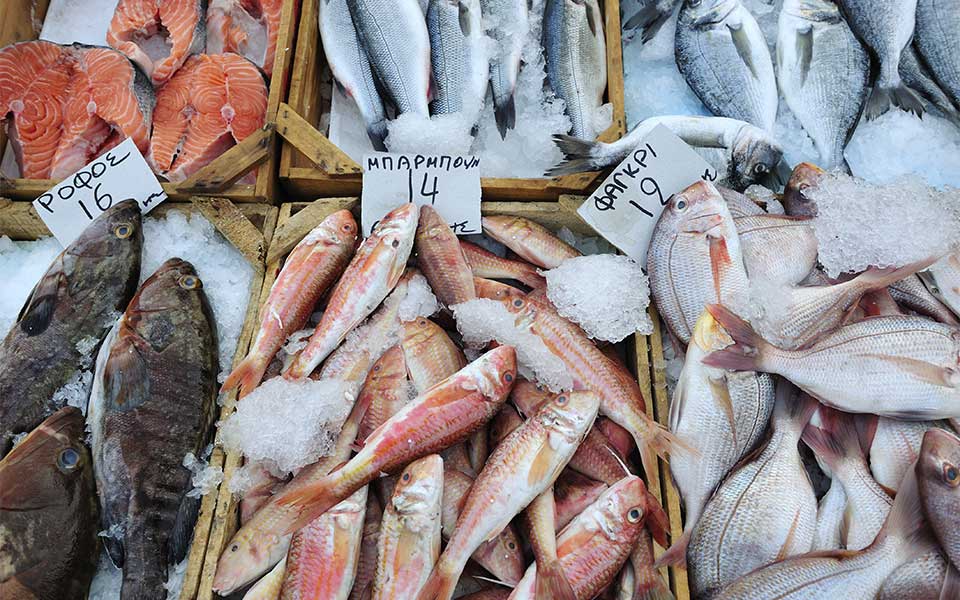(Editor’s note: Please note that this article is only intended as a guide to understanding which species of fish have been traditionally consumed in Greece. It should not, however, be taken as a recommendation that they continue to be eaten. As in many parts of the world, many species in Greek seas are under severe pressure from overfishing – including species on this list which are included for informational purposes only. We have tried to point out some of the most vulnerable cases, but a comprehensive guide to ensuring the fish you are eating is sustainably sourced (which includes information like seasonality / fishing methods / minimum catch sizes etc.) is beyond the scope of this article at this time. For more practical guides on the subject we recommend you explore the sustainable seafood guides of the environmental organizations WWF, Greenpeace, Archipelagos and iSea).
Here’s an experience that many a foreign visitor to a Greek psarotaverna (a taverna specializing in fish) will have had: you sit at a table and pick up the menu, but the English translations are almost as indecipherable as the Greek names.
After a back-and-forth with the waiter makes little headway, he invites you to inspect the glass case displaying the day’s catch on ice. You pick out a fine looking fish; the waiter says its name but you don’t quite catch it. A short while later it arrives at the table grilled to perfection, served with the simple but perfect ladolemono (lemon and olive oil emulsion). And it is sublime. But as you leave the restaurant you’re still left with a question: what fish did I just eat?
This confusion is not surprising, after all, the seafood on offer in Greece, drawn from the waters of the Mediterranean is often very different from that found in countries bathed by the Atlantic or the Pacific. On top of that there are cultural differences – what are considered staples or delicacies in Greece may not be common food fish in other countries, even if they show up in fishermen’s nets.
So in the interest of separating the sprats from the mullets and the tsipoures from the fagris, we have put together this alphabetized guide to the fish and other sea creatures you’re most likely to find on Greek menus with their English, Greek and scientific names (and photos!).
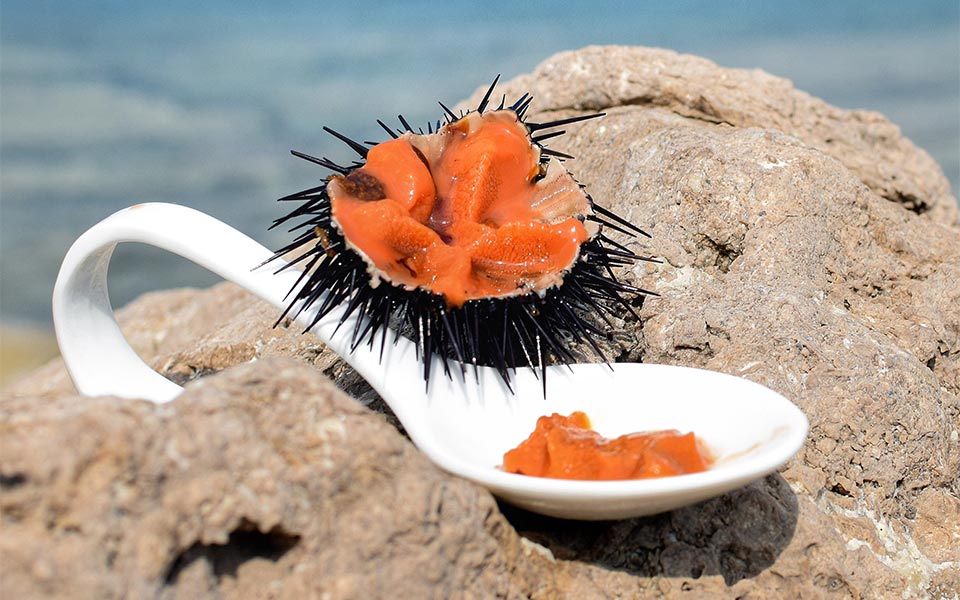
© Shutterstock
Achinos
Greek name: Αχινός (Ah – hee – NOHS)
Scientific name: Paracentrotus lividus
English name: Urchin, sea urchin
About this Animal: Round, spiky and purple-black in color, this creature flourishes in the shallow waters of the Mediterranean, particularly on rockier parts of the seabed (which is why it’s critical to be careful of where you’re stepping when going for a swim), and it feeds on the surrounding plant life. Another fun fact: its modern Greek name, ‘achinos’ stems from the ancient Greek word echinos, meaning hedgehog.
How It’s Served: What is consumed is the roe of the animals, which is typically eaten raw with just a drizzle of lemon and has a taste somewhere between caviar and an oyster (in Japan this is known as uni). Some Greeks harvest them themselves in the summer, and slice them open and eat them right on the beach. Be aware, however, that doing so is illegal and can lead to hefty fines – only licensed fishermen may harvest them, and only during certain months of the year.
Extra knowledge: Should you get spines from a sea urchin embedded in your skin, apply liberal amounts of olive oil before attempting to extract them – it will help the spines slide back out.
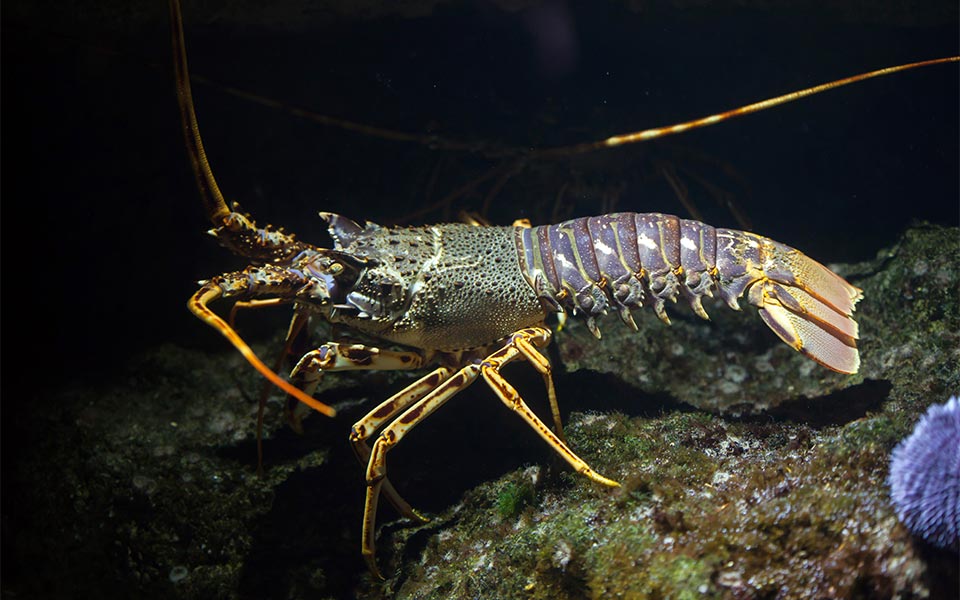
© Shutterstock
Astakos
Greek name: Αστακός
Scientific name: Homarus gammarus, Palinurus elephas
English name: European lobster, European spiny lobster respectively
About This Animal: The astakos, or lobster, that you’ll eat in Greece is mostly fished from around small uninhabited islands in the Aegean. Several basic types exist: the karavidomana (European lobster) which has large claws, and the more common astakos agathotos (European spiny lobster) which has two very long antennae. Restaurants and markets will also sell kolohtipa, or the Mediterranean slipper lobster which resembles a cross between a lobster and a bulldozer.
How It’s Served: Astakos is frequently stewed with tomato, garlic and herbs and served over pasta (a dish called astakomakaronada that is popular at many seafood restaurants). Alternatively it is simply grilled and served with lemon and oil or butter.
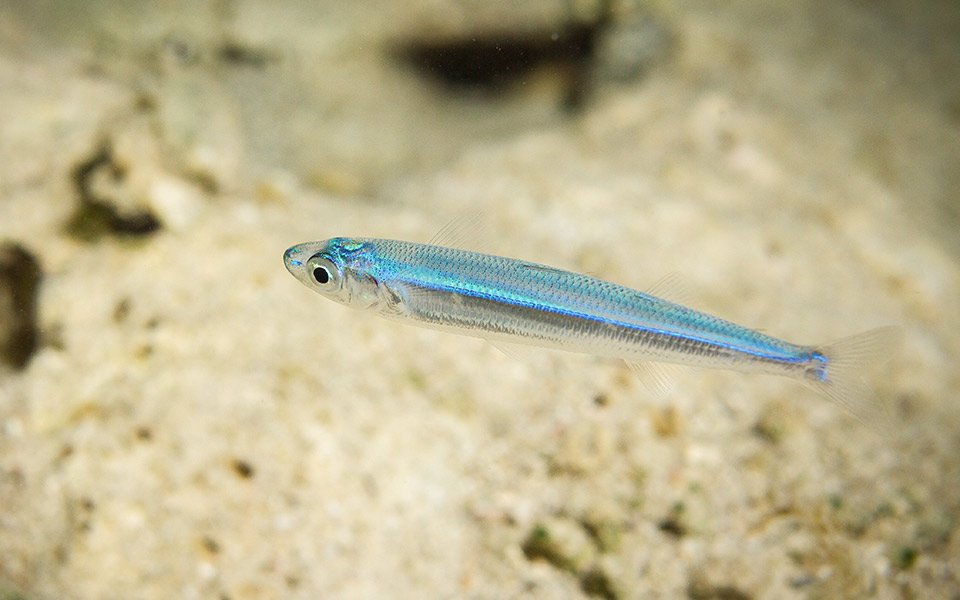
© Shutterstock
Atherina
Greek Name: Αθερίνα (Ah – thehr – EE – nah)
Scientific Name: Atherina hepsetus
English Name: Mediterranean sand smelt
About This Fish: Atherina are a species of small fish (8-15 cm in length) that live in shoals in surface waters where they feed on plankton. Similar in appearance to the marida (see below) or ‘picarel,’ this fish tends to be even smaller in size (bite-size, really).
How It’s Served: These fish are battered in flour, fried and eaten whole in the same manner as marides.
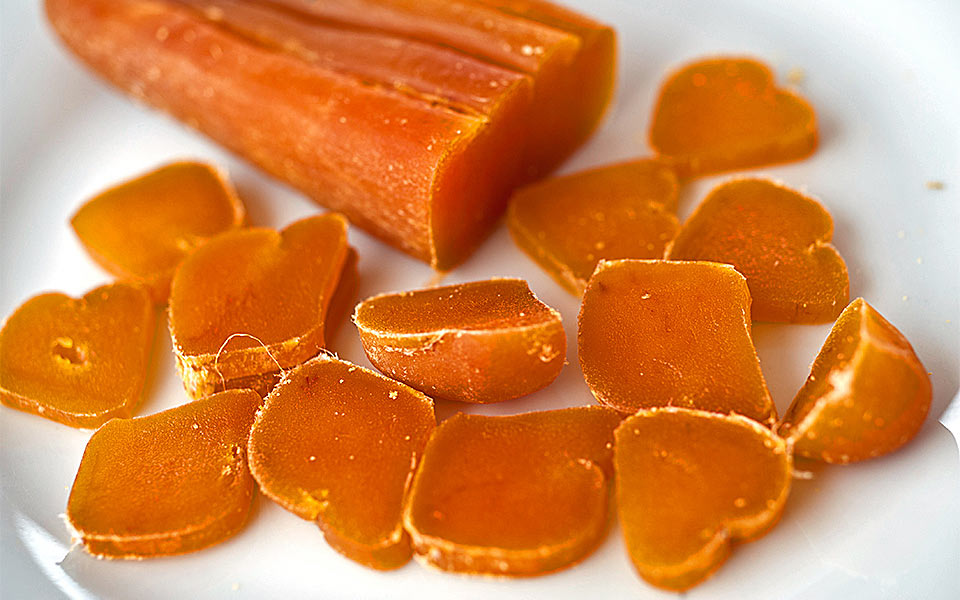
© Clairy Moustafellou
Avgotaracho
Greek Name: Αυγοτάραχο (Ahv – goh – TAH – rah – hoh)
Scientific Name: Mugil cephalus (the fish that produces the eggs)
English Name: Greek bottarga
About This Animal: Avgotaracho, or Greek bottarga, is essentially the cured eggs of the female kefalos (flathead grey mullet). The large egg sacs are removed and salted, pressed, and dipped in beeswax to preserve them. The most famous Greek avgotaracho is produced in the region of Messolonghi, located in western-central Greece where the fish are caught in the shallow, brackish marshes where they feed and breed.
How It’s Served: Traditionally, Greeks cut the highly-prized avgotaracho into thin slices and eat it as-is, as a high quality meze, paired with ouzo or champagne. However, gourmands also recommend it with bread and butter or in pasta, while a new generation of chefs are also experimenting with it as an ingredient in creative dishes in high-end restaurants. Given its strong flavor, a small portion goes a long way.
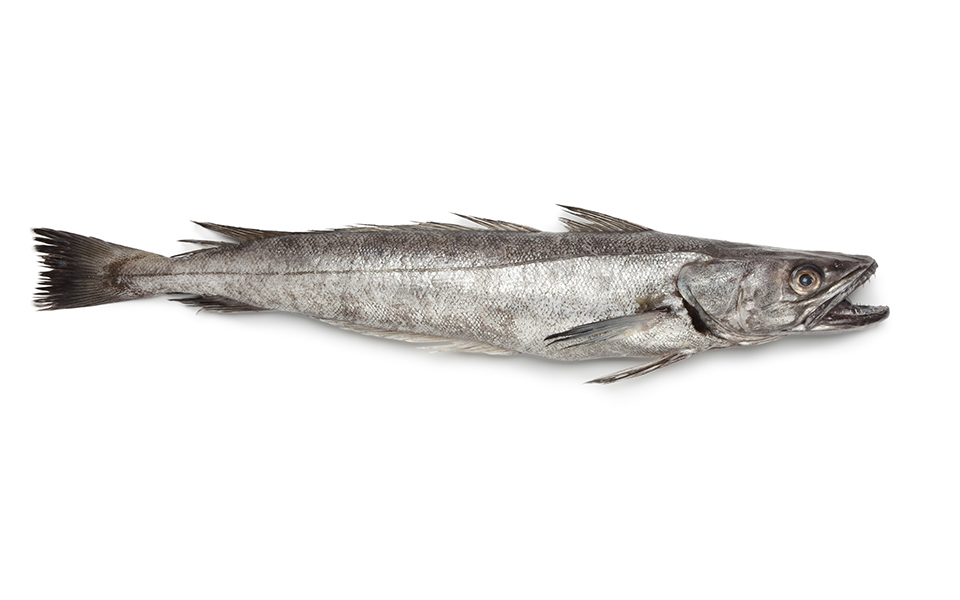
© Shutterstock
Bakaliaros
Greek Name: Μπακαλιάρος (Bah – kah – LIAH – rohs)
Scientific Name: Merluccius merluccius
English Name: European hake
About This Fish: Known better in English simply as ‘hake,’ bakaliaros is one of the more intimidating fish swimming in the Mediterranean. They are fast, carnivorous fish with big heads and a mouthful of sharp teeth. In Greek fish markets, however, they much less intimidating and, in fact, sought after for their soft flesh.
How It’s Served: This fish is classically enjoyed in traditional fish soup, though it may be fried or baked in the oven with potatoes, tomato and garlic.
Νote: The name “bakaliaros” can also refer to the Atlantic cod, which is related to the hake.
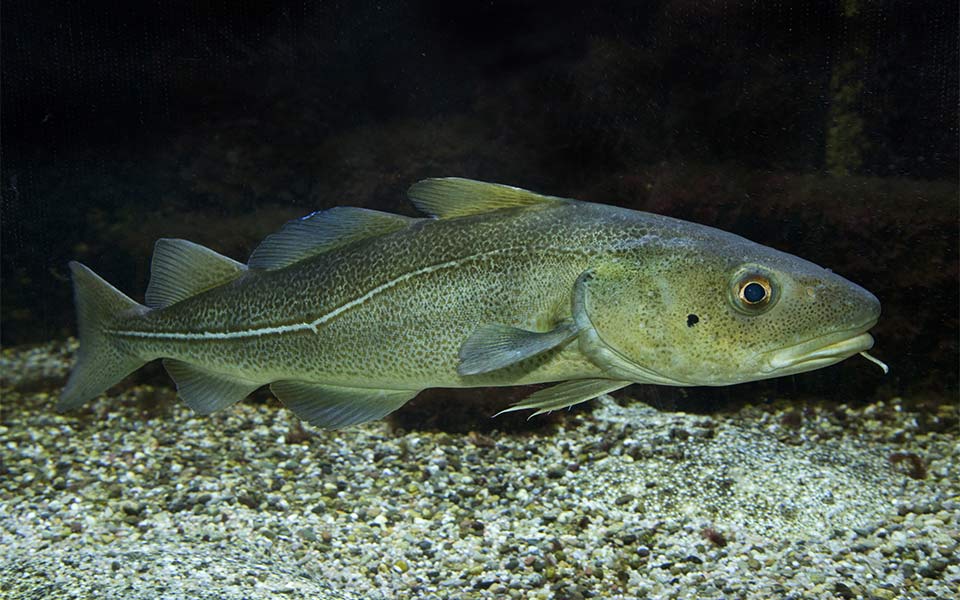
© Shutterstock
Bakalaos (aka Bakaliaros)
Greek Name: Mπακαλάος (bah – kah – LAH – ohs)
Scientific Name: Gadus morhua
English Name: Atlantic cod
About This Fish: Bacalaos (also known as bakaliaros – a name it shares in Greek with the European hake – see above) lives in colder waters – mainly in the Atlantic Ocean. For centuries it has been one of the most important commercial fishes in Europe, with the cured fish traded throughout the continent (although overfishing ultimately led to the collapse of some stocks in the 1990s and new restrictions on its fishing). While it is not native to Greek waters, bakalaos nevertheless became important in the country; in the days before refrigeration, in its salted form it was one of the few relatively inexpensive fish accessible to communities living in non-coastal areas.
How It’s Served: You will find this fish filleted, dried and salted in Greece. It is then soaked in water and typically batter fried and served with skordalia (garlic dip). Indeed this dish is customarily eaten on Greece’s Independence Day on March 25. On the island of Crete, locals stew it with greens.
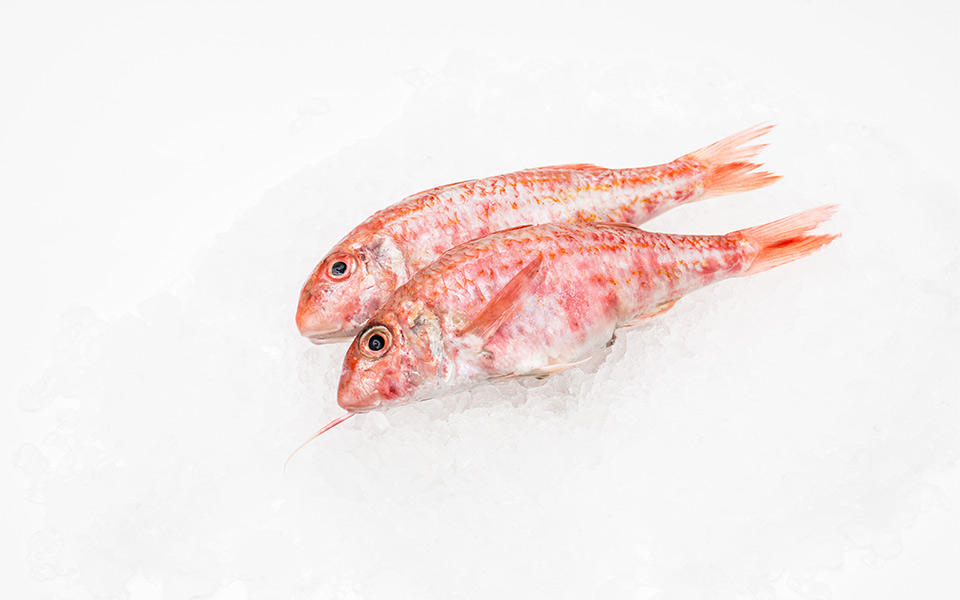
© Shutterstock
Barbouni
Greek Name: Μπαρμπούνι (Bahr – BOO – nee)
Scientific Name: Mullus barbatus
English Name: Red mullet
About This Fish: Once considered a delicacy by the ancient Romans, barbouni is a type of goatfish native to the Mediterranean Sea. Today, the small, pinkish fish is a staple in Greek fish taverns, prized for its mildly sweet flavor.
How It’s Served: Barbounis are most often dipped in flour and fried, though you may also find them grilled at some traditional Greek restaurants. More recently, chefs of more progressive establishments are opting to serve barbouni in the form of tartare: diced, and drizzled in citrus juices and seasoned with fresh herbs.
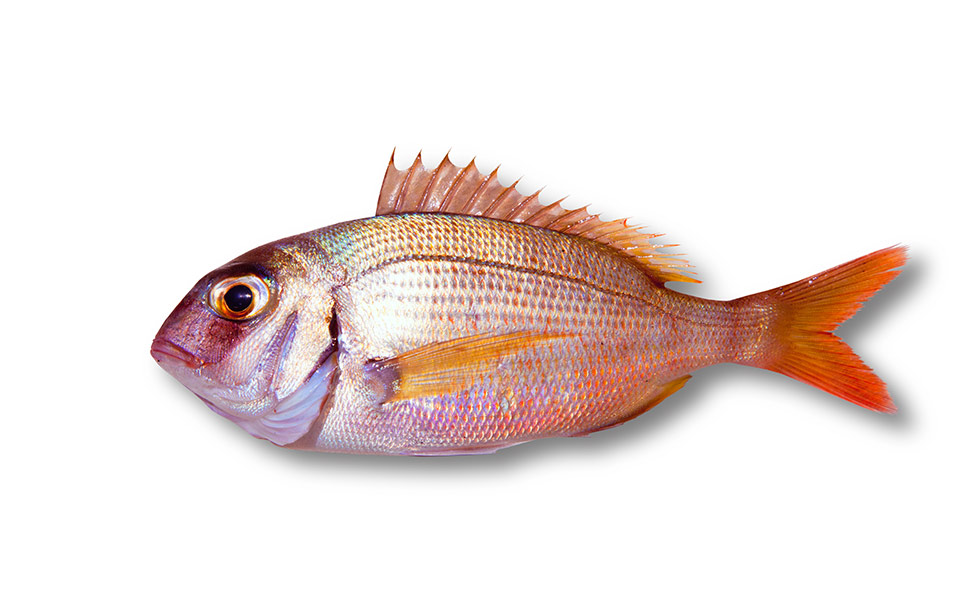
© Shutterstock
Fagri
Greek Name: Φαγκρί (Fah – GREE)
Scientific Name: Pagrus pagrus
English Name: Red porgy, common seabream
About This Fish: As indicated by its common English name, fagri is relatively large in size and silvery-rose in color. It’s one of the more highly-prized fish you’ll find at fish markets and in restaurants in Greece, considered one of the tastiest fish to enjoy grilled. Fagri are both caught wild and raised in fish farms (the former can be at the pricier end of the spectrum, the latter are less expensive).
How It’s Served: Fagri is generally grilled and garnished with ladolemono, a mixture of lemon and olive oil, although it can also be stewed to make a psarosoupa, or fish soup.
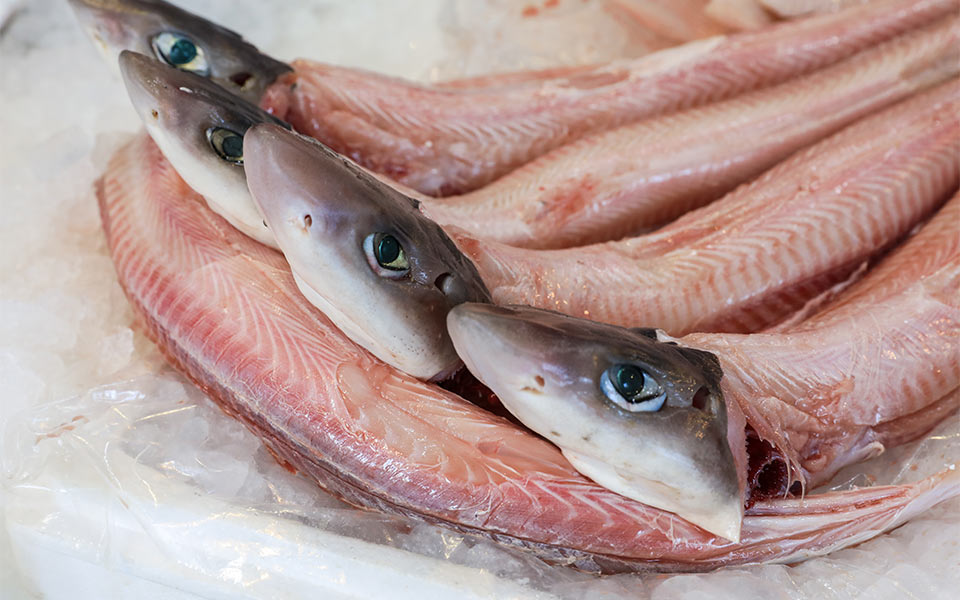
© Shutterstock
Galeos (Vulnerable)
Greek Name: Γαλέος (Gah – LEH – ohs)
Scientific Name: Galeorhinus galeus
English Names: School shark, tope shark, soupfin shark
About This Fish: Slender and long-nosed, this shark is native to temperate and subtropical waters worldwide. Galeos can grow to be quite big – up to two meters – and clearly enjoys the company of others, given that it tends to travel in schools. Over the years worldwide, the species has been excessively fished for its vitamin-rich liver oil which has contributed to the species’ dwindling numbers.
How It’s Served: Galeos is usually sold sliced in fillets for buyers’ convenience and baked in the oven with potatoes and seasoned with lemon and herbs, or sliced, fried and served with a side of skordalia, or garlic dip.
Other notes: In Greece environmental organizations such as Greenpeace International and Archipelagos strongly encourage consumers to steer clear of this fish due to its vulnerable status.
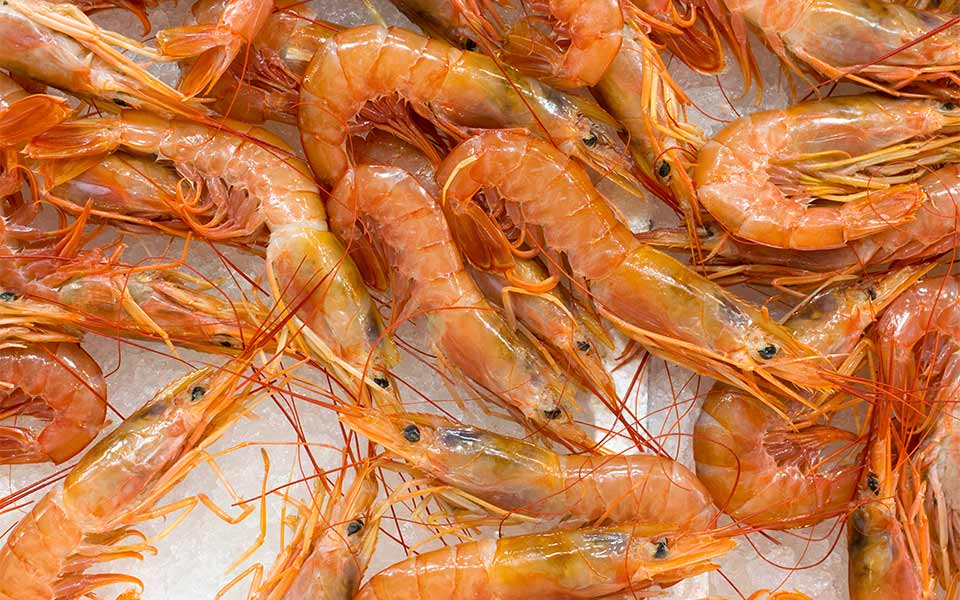
© Shutterstock
Garida
Greek Name: Γαρίδα (Gah – REE – thah)
Scientific Name: Crangon crangon (among others)
English Name: European shrimp, shrimp, prawns
About This Animal: Garida, is a general term to describe shrimp and prawns of which there are many different species. About 30% of the shrimp consumed in Greece is fished locally, the rest is imported. Key areas where shrimp are fished include the Ambracian Gulf (which produces a large type of shrimp known as gambari) the Northern Aegean, off the coast of the Southern Peloponnese and in the Dodecanese. The symiaki garida (scientific: Plesionika narval) – a type of shrimp that takes its Greek name from the island of Symi where it is common – is famed for its small size and great flavor.
How It’s Served: In Greece shrimp are frequently stewed with tomato, garlic and herbs and served over pasta, although they may also be simply fried or, if they are large enough, grilled. Some of the smaller ones can be eaten whole with their shells. Another common dish is “garides saganaki”, baked in a tomato sauce with cheese (usually feta) and peppers. You may also find them grilled or boiled and tossed in a salad in some restaurants, although in this case, food critics warn, the shrimp is often of lower quality (frozen) and intended to raise the total cost of the dish served.
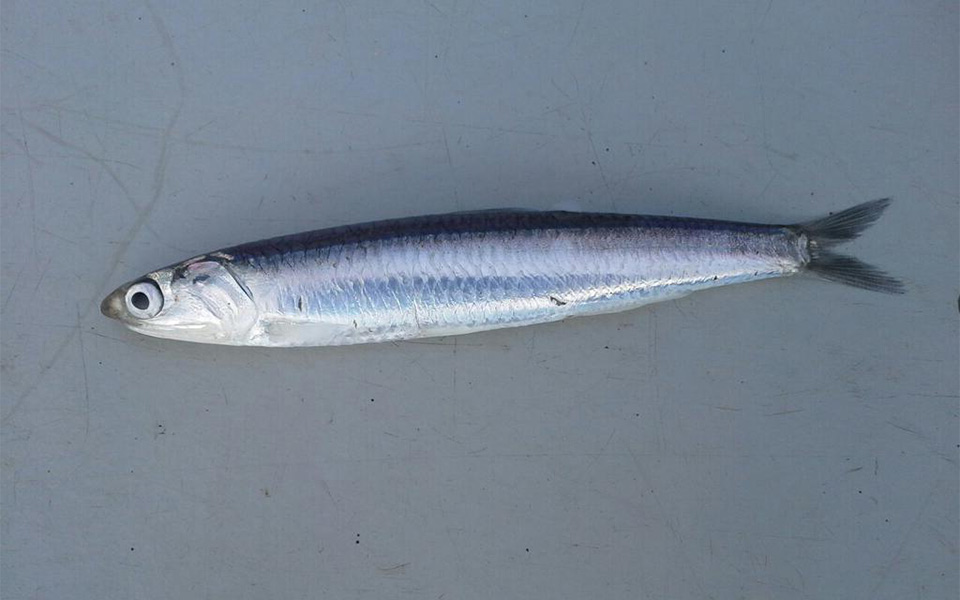
© Jschop via Wikipedia CC BY-SA 3.0
Gavros
Greek Name: Γαύρος (GAH – vros)
Scientific Name: Engraulis encrasicolus
English Name: European anchovy
About This Fish: A small, slender fish with a naturally salty punch, gavros is typically found in the Mediterranean and Black Seas.
How It’s Served: Gavros is most often fried and served as a meze to be paired with tsipouro or ouzo. The small fish can also be pickled (gavros marinatos) and can be found as such at many delis.
Trivia: You may also hear the term “gavros” (plural gavroi) at a stadium in Greece, as it is the nickname of supporters of the Olympiakos football team which is based in Piraeus. According to one explanation, this moniker was created in the 1960s after Olympiakos fans traveled to a rival stadium for an away game only to be met with crates of the little fish that had been stolen from Piraeus.
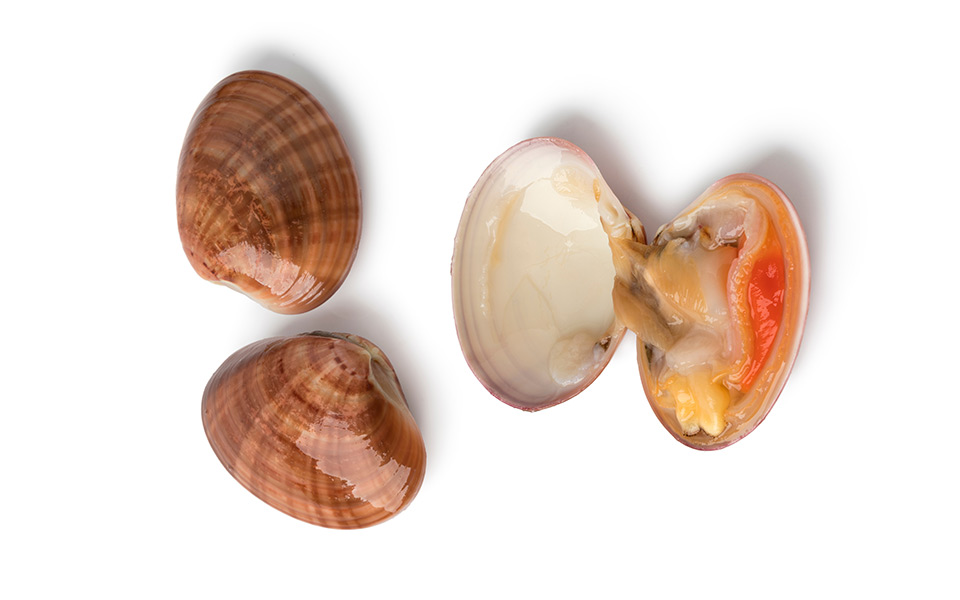
© Shutterstock
Gyalisteres
Greek Name: Γυαλιστερές (Yah – lee – stehr- EHS)
Scientific Name: Callista chione
English Name: Smooth clams
About This Animal: A largish mollusc with a smooth brownish shell, gyalisteres can be found in bounty in many parts of the country in sandy seabeds. As they filter the water, they should generally only be consumed when sourced from areas with clean seas.
How It’s Served: Gyalisteres are usually eaten raw, and super fresh, with just a drizzle of lemon. In some parts of the country they are also steamed or briefly cooked on a grill.
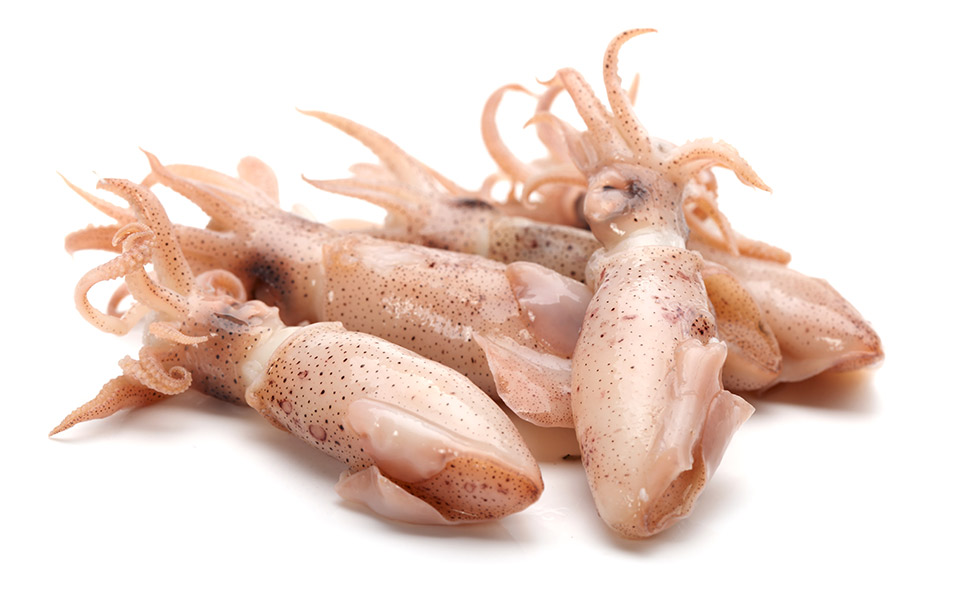
© Shutterstock
Kalamari
Greek Name: Καλαμάρι (Kah – lah – MAH – ree)
Scientific Name: Loligo vulgaris
English Name: Squid, European squid, Common squid
About This Animal: Commonly known as the ‘European squid,’ the kalamari that you’ll find at the nearest fish taverna is relatively small with bodies normally around 20cm in length making it easy for cooks to handle in the kitchen (that is, in comparison to the thrapsalo – see below). They have ten tentacles, two of which are longer for seizing prey. They can also change the color of their skin for camouflage and communication. The only hard part of the squid is the beak (mouth) which is normally removed before cooking.
How It’s Served: Another staple of the Greek taverna, kalamari are commonly sliced up and batter fried and served with lemon (some people prefer the crispy tentacles, others the round parts of the body). They can also be grilled or, on some occasions, stuffed for a savory indulgence. Some common fillings include tomato, feta and herbs or rice and herbs.
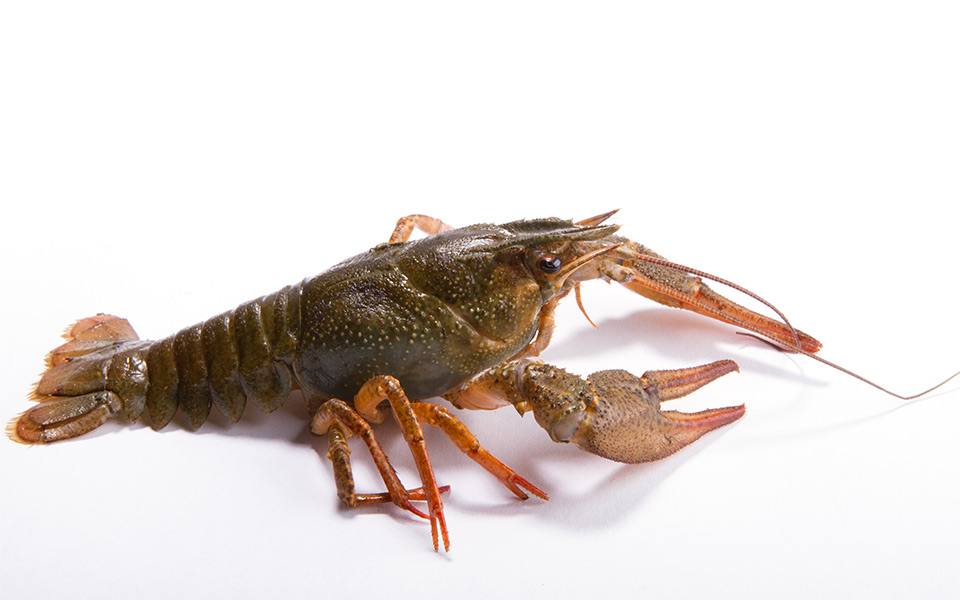
© Shutterstock
Karavida
Greek Name: Καραβίδα (Kah – rah – VEE – dah)
Scientific Name: Astacus astacus, Cambarus bartonii
English Name: Crawfish, crayfish
About This Animal: Widely considered a luxurious seafood in Greece, karavida is a crustacean that can be found in both saltwater and freshwater environments throughout the country. Chefs love to use the psiha, or flesh, of the karavida for a variety of dishes.
How It’s Served: Karavides are often stewed with tomato, garlic and herbs and served with pasta, though you may also enjoy them fried or grilled, or in a salad.
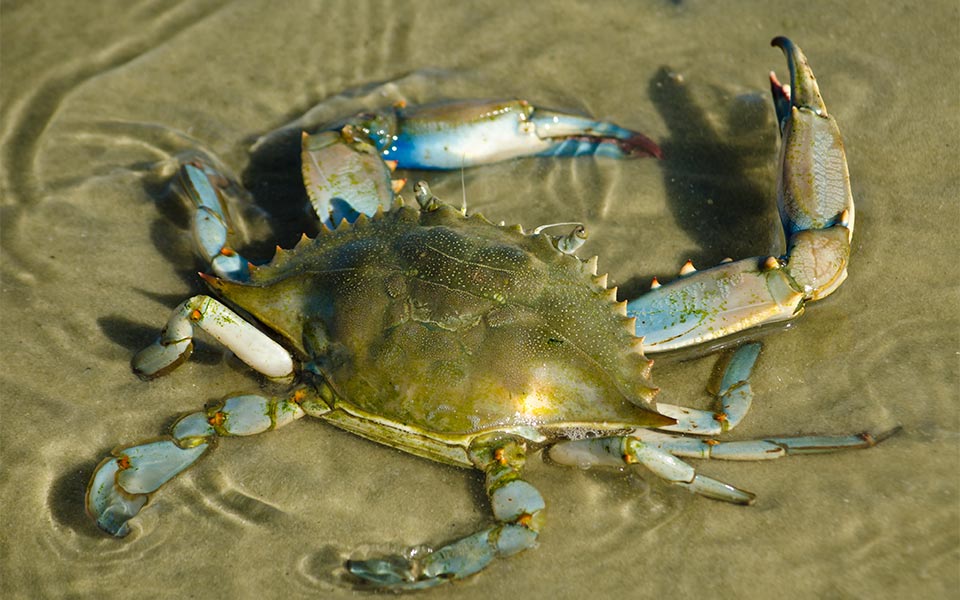
© Shutterstock
Kavouri
Greek Name: Καβούρι (Kah – VOO – ree)
Scientific Name: Callinectes sapidus
English Name: Crab / Blue Crab
About This Animal: Native to the Atlantic, it is thought that the blue crab was introduced into European waters through ships’ ballast. It is now caught in several locations in the Aegean.
How It’s Served: Kavouri is most often grilled or boiled in Greek kitchens. It serves as a great meze while indulging in a glass (or two) of tsipouro, or a great main course when made in pilafi, or risotto.
Other notes: Kavouria can live 2 to 3 days out of water. With that said, it’s important to select a crab from a market or restaurant that is clearly alive (i.e. mobile). Do not consume the crustacean if it appears to be dead before cooking.
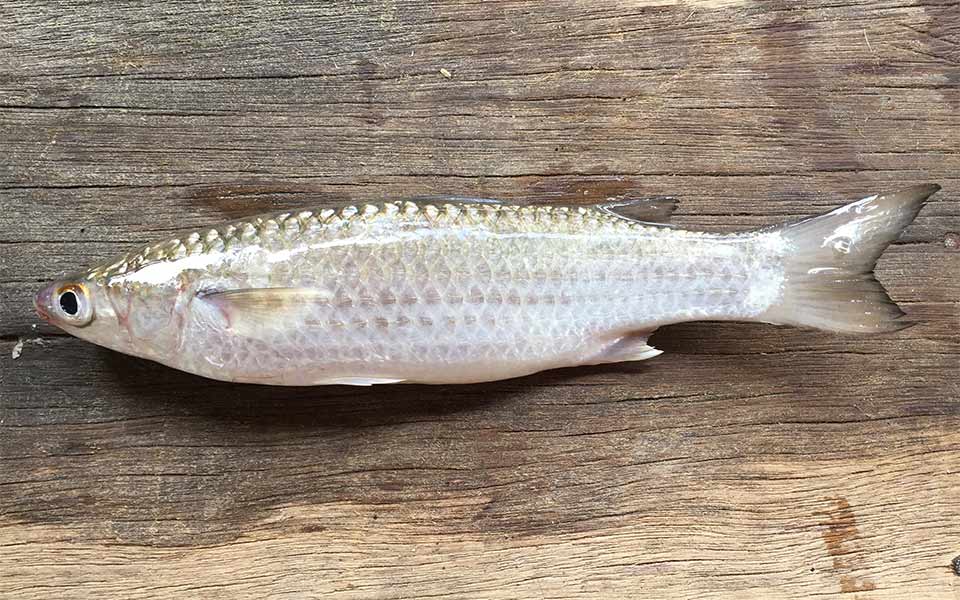
© Shutterstock
Kefalos
Greek Name: Κέφαλος (KEH – fah – lohs)
Scientific Name: Mugil cephalus
English Name: Flathead grey mullet, striped mullet
About This Animal: With an elongated body and grayish-brown coloring, the kefalos is a cautious type, traveling in schools for safety. This fish has the ability to tolerate a range of salinity levels and can live in coastal waters as well as in estuaries and rivers. They are particularly common in the Ambracian Gulf and surrounding lagoons where they reproduce. The female kefalos is also the source of avgotaracho – Greek bottarga (see above).
How It’s Served: In Preveza, kefalos is traditionally baked in the oven with roasted vegetables and drizzled in olive and lemon.
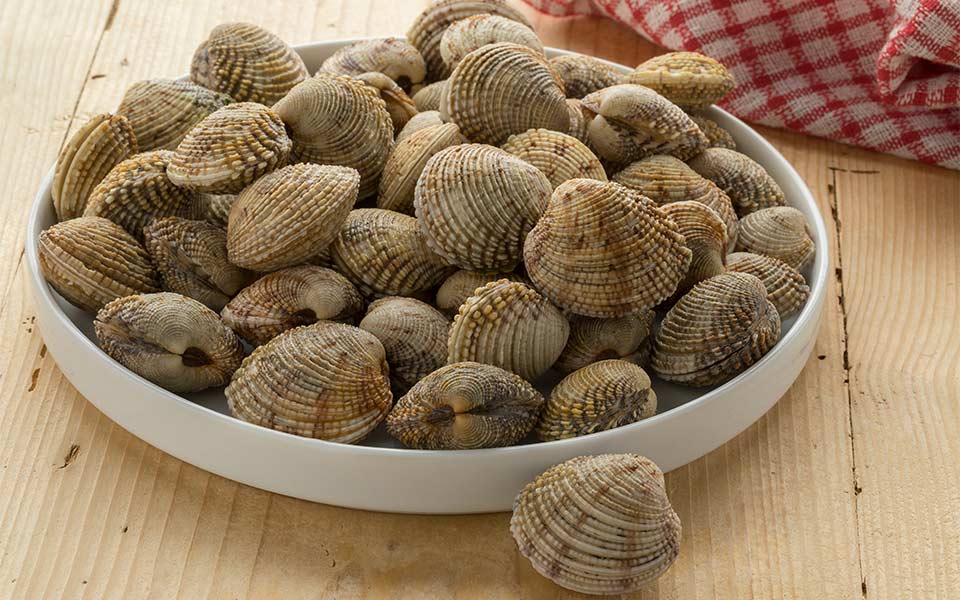
© Shutterstock
Kidoni
Greek Name: Κυδώνι (Kee – THOH – nee)
Scientific Name: Venus verrucosa (among other species)
English Name: Cockle, clam, warty venus
About This Animal: Easily identifiable from their thick, ribbed shells, like gyalisteres (smooth clams) kidonia live in sandy seabeds throughout the country.
How It’s Served: They’re best eaten raw (and alive) with a drizzle of lemon.
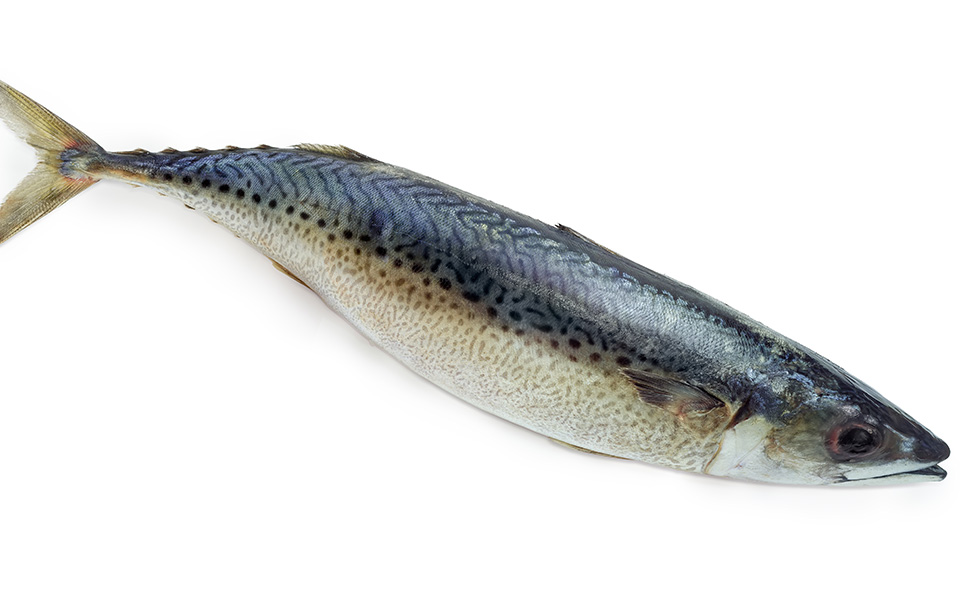
© Shutterstock
Kolios
Greek Name: Κολιός (Kohl – YIOHS)
Scientific Name: Scomber colias
English Name: Mackerel, Atlantic chub mackerel
About This Animal: Commonly known in English as mackerel and favored for its health benefits (the fish is rich in omega-3 fatty acids), kolios is an inhabitant the Atlantic Ocean as well as the Mediterranean and Black Seas.
How It’s Served: Kolios is often baked in the oven with garlic and tomato, though it can also be fried. Sometimes, you may find the fish cured, or salted (pasto), to be eaten as a meze with tsipouro or ouzo.
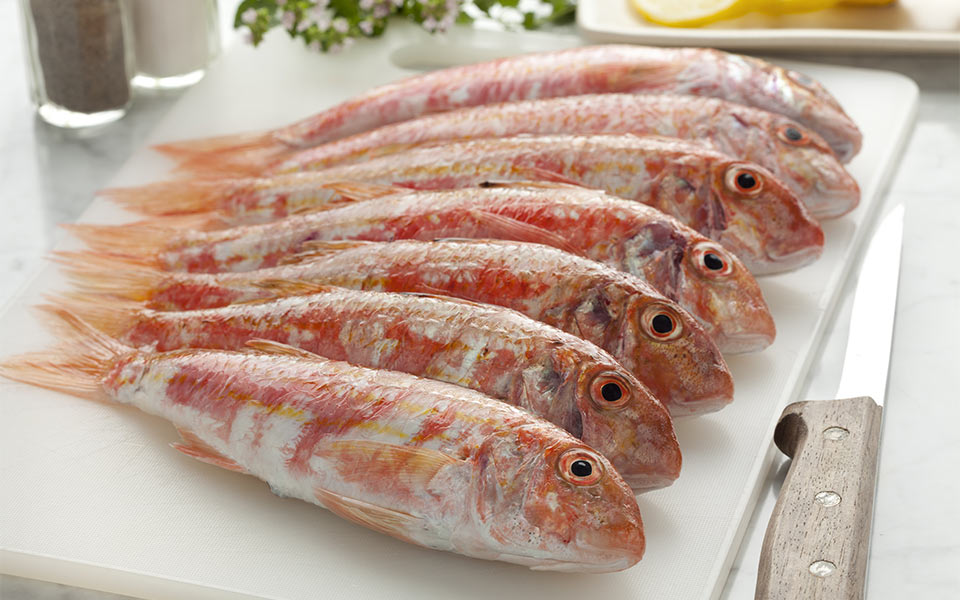
© Shutterstock
Koutsomoura
Greek Name: Κουτσομούρα (Koo – tso – MOO – rah)
Scientific Name: Mullus surmuletus
English Name: Striped red mullet
About This Animal: Kin to barbouni (‘red mullet’ – see above), koutsomoura is a smaller type of goatfish.
How It’s Served: While gastronomists recommend fried koutsomoura, this fish may also be grilled – if the fish are large enough – and served with a side of lemon.
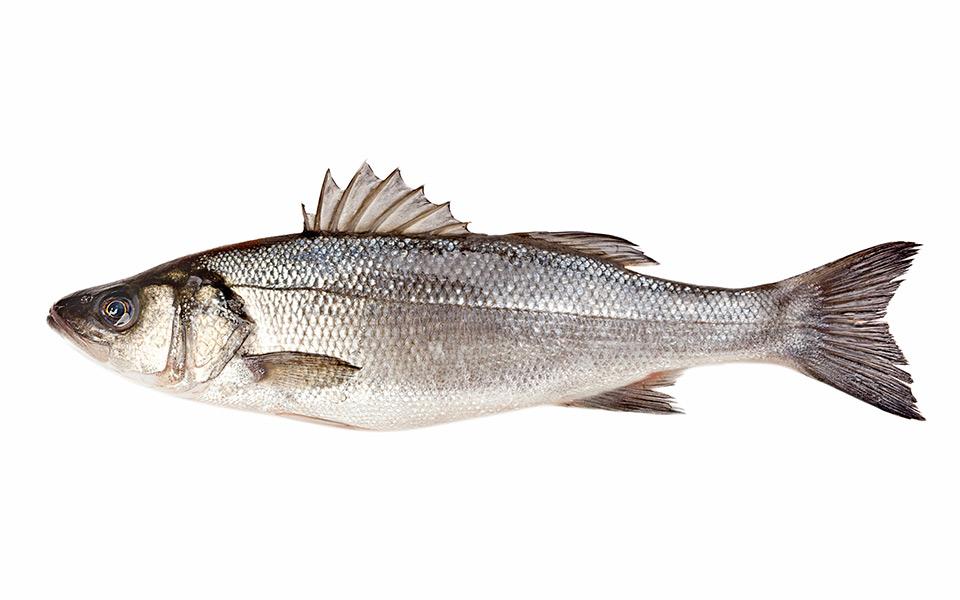
© Shutterstock
Lavraki
Greek Name: Λαβράκι (Lah – VRAH – kee)
Scientific Name: Dicentrarchus labrax
English Name: Bass, sea bass, Mediterranean sea bass
About This Animal: Lavraki is one of the most popular fish and a signature main dish at many seaside Greek tavernas. Though it is somewhat more expensive (when wild-caught) than some of the other options on this list, locals would argue that it’s worth the indulgence. It is also one of the most extensively farmed fish in Greece, and one of the most important commercially farmed fish in the Mediterranean as a whole.
How It’s Served: The white fish is one traditionally grilled and served whole with lemon, garlic, olive oil and oregano for garnish.
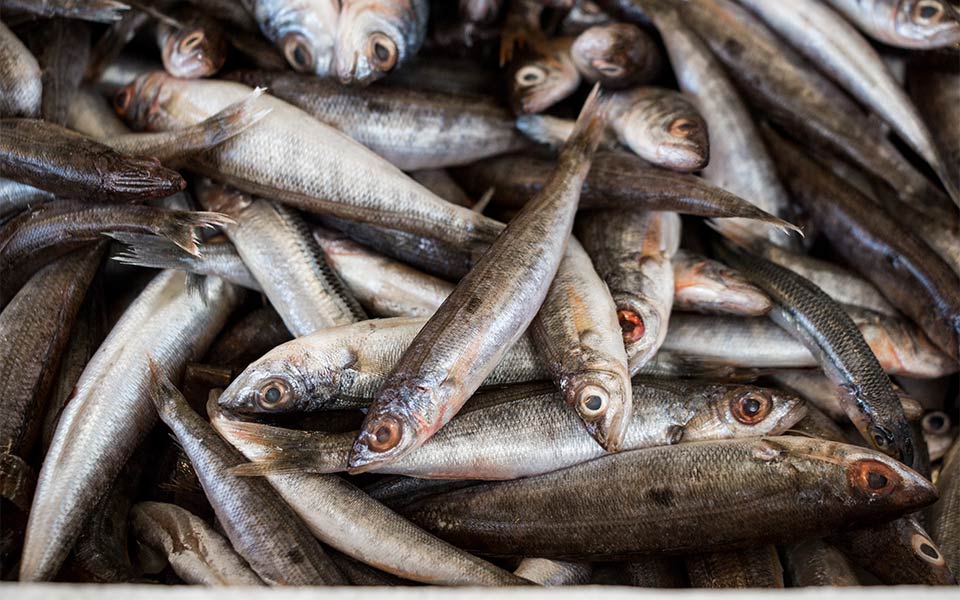
© Shutterstock
Marida
Greek Name: Μαρίδα (Mah – REE – dah)
Scientific Name: Spicara smaris
English Name: Picarel, whitebait
About This Animal: Marida as a species refers to the picarel, small, silver fish native to the eastern Atlantic Ocean, Mediterranean Sea and Black Sea. They live in shoals mainly around areas with sandy seabeds and seagrasses. However note that not all fish sold as ‘marida’ are picarel, they can sometimes be whitebait, meaning the young fish of various species (indeed marida is often translated as whitebait on Greek menus).
How It’s Served: These fish are lightly dusted in flour and fried. They make for a great meze at Greek fish tavernas and ouzeries. Marides’ small size makes it easy to eat the fish whole (after you’ve squeezed a bit of lemon over them).
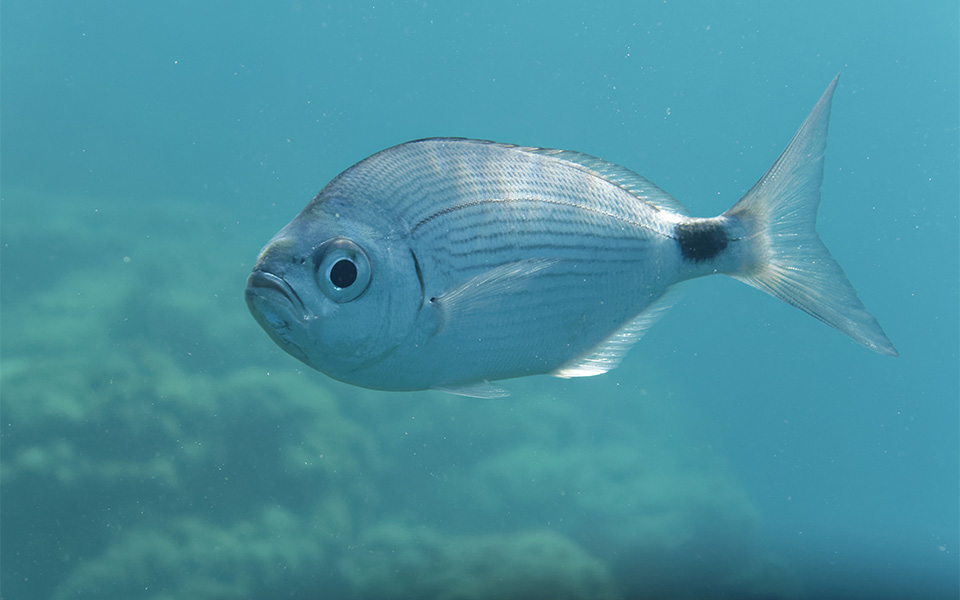
© Shutterstock
Melanouri
Greek Name: Μελανούρι (Meh – lah – NOO – ree)
Scientific Name: Oblada melanura
English Name: Saddled sea bream
About This Animal: A flat, grey fish best distinguished by the single, black dot situated between its body and tail, melanouri can typically be found in eastern Atlantic and Mediterranean waters. An omnivorous fish, it loves to feed on small invertebrates in addition to plant life. Often in shallow waters and close to shore, it is a common sight when snorkeling.
How It’s Served: Melanouri is generally grilled on charcoal and garnished with lemon
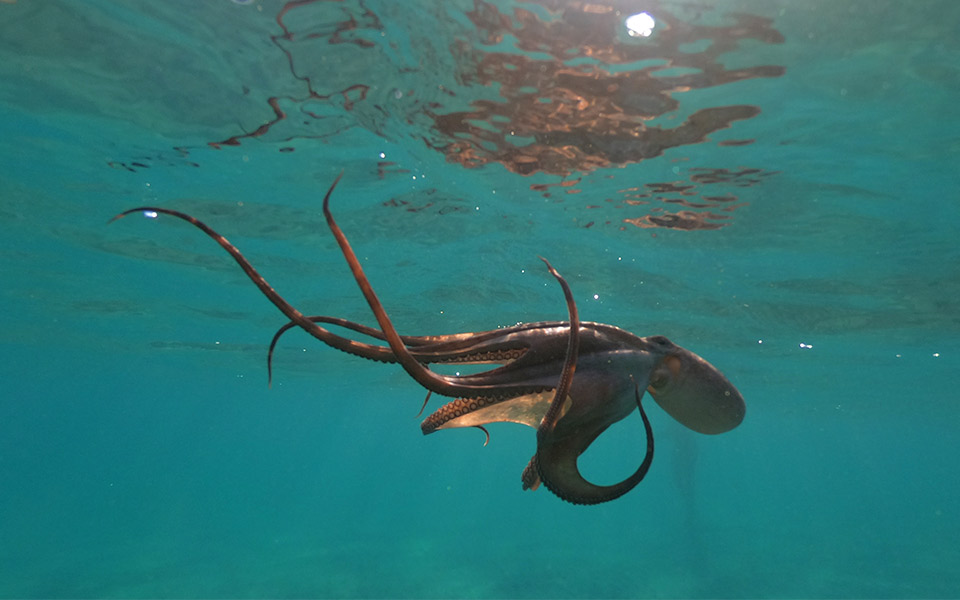
© Shutterstock
Octopus (Htapodi)
Greek Name: Χταπόδι (Ktah – POH – thee)
Scientific Name: Octopus vulgaris
English Name: Common octopus
About This Animal: A medium-sized animal that thrives in tropical and temperate waters worldwide, the octopus is reputed to be something of a hermit, prefering to stay in the crevices of the sea and ocean bottoms. There, it feeds mostly on crustaceans like crab, lobster and shrimp. Scientists consider it to be the most intelligent of the invertebrate animals. Greeks find it to be one of the most delicious. Many amateur spear-fishermen hunt for the animal in the summer and you will frequently see them beating their catch against the rocks to tenderize it.
How It’s Served: Whether it is sun dried and grilled then drizzled with olive oil and lemon, marinated in vinegar (xidato), or cooked in wine, octopus is a delicacy that can be found on the menu of many tavernas in Greece. A fan of seafood pasta? Another traditional recipe is octopus with tomato sauce and short macaroni.
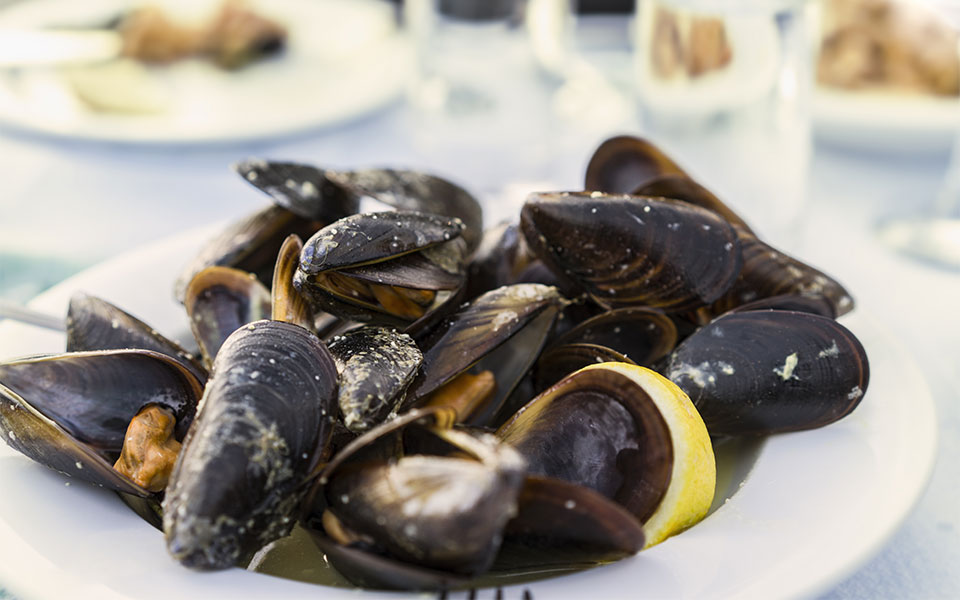
Mydi
Greek Name: Μύδι (MEE – thee)
Scientific Name: Mytilus galloprovincialis
English Name: Mussel, Mediterranean mussel
About This Animal: These medium-to-large saltwater mussels can be found naturally in the Mediterranean and Black Seas as well as the east Atlantic Ocean. They are also the object of aquaculture and mussel farms in the northern and western Greek cities of Kavala and Preveza have created a more bountiful supply of these meaty molluscs.
How It’s Served: Greeks traditionally use mussels to make mydopilafo – a risotto with mussels and herbs. You can also often find them steamed with garlic at many fish restaurants.
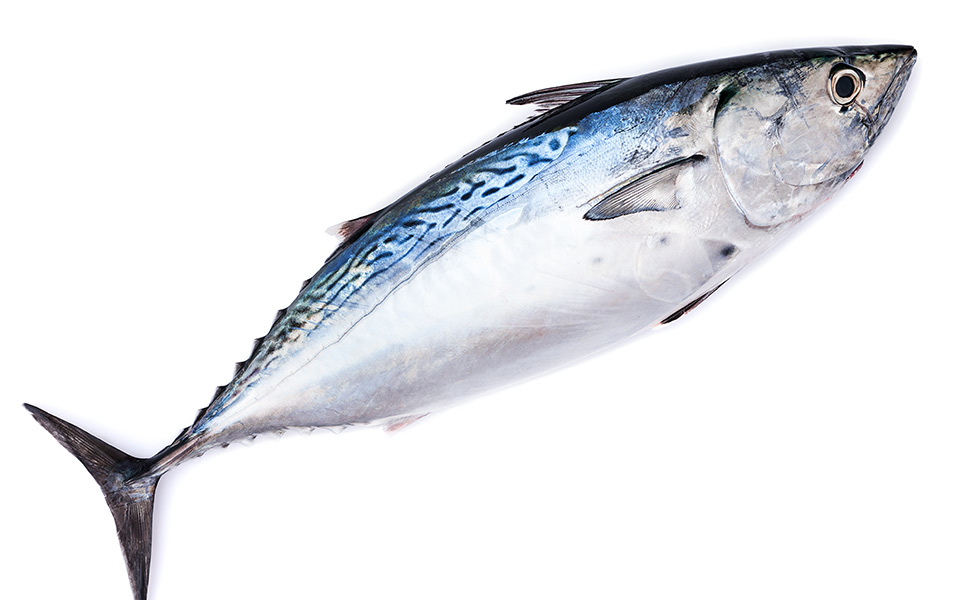
© Shutterstock
Palamida
Greek Name: Παλαμίδα (Pah – lah – MEE – thah)
Scientific Name: Sarda sarda
English Name: Atlantic bonito
About This Animal: The palamida is a strong swimmer that lives in shoals and feeds on smaller fish such as mackerel, as well as squid. It is also migratory, traveling between the Mediterranean and Black Sea. For that reason it could once only be found in Greek seas in the winter months, although it appears to be increasing its presence in the Mediterranean in the warmer months as well.
How It’s Served: Palamida is an oily fish with flesh similar to mackerel and tuna. It is typically cut into fillets, which are either grilled or baked in the oven fresh, or pickled and preserved in oil to create a meze known as lakerda.
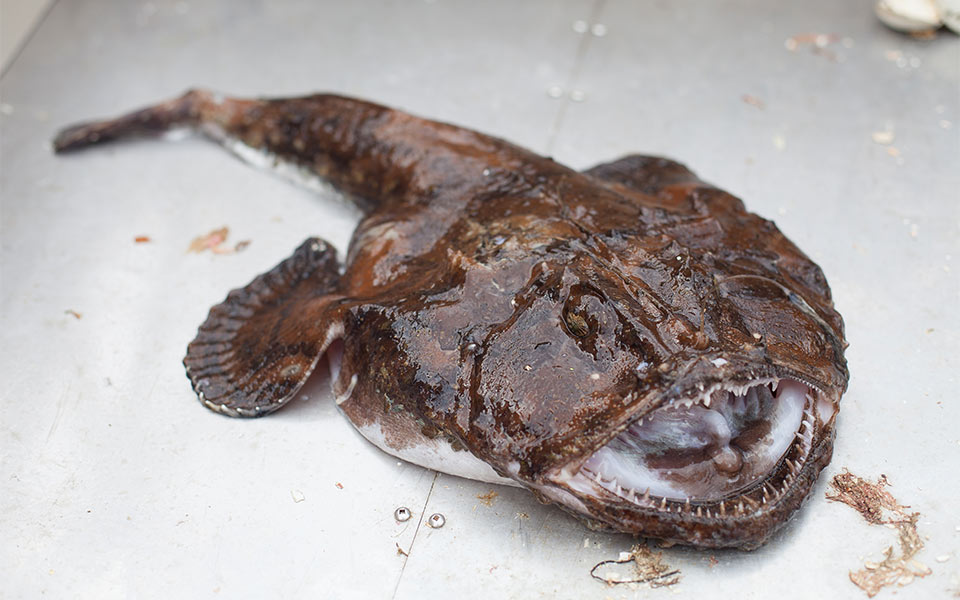
© Shutterstock
Peskandritsa
Greek Name: Πεσκανδρίτσα (Pehs – kahn – DREE – tsah)
Scientific Name: Lophius piscatorius
English Name: Anglerfish, monkfish, goosefish
About This Animal: One of the more aesthetically unappealing fish that lurk on the seabed, peschandritsas tend to be large in size – they can weigh up to 34 kilograms – and are known for their large mouths full of razor-sharp teeth. Ambush predators, they attract prey with the aid of a spine modified to act as a lure, then gulp it down in one lightning-fast movement.
How It’s Served: A tasty fish with few bones to pick off, many Greeks enjoy peschandritsa baked in the oven with tomato and herbs. Some chefs also fry the tails of smaller animals for an alternative meze, and boil the heads of larger ones for fish soup.
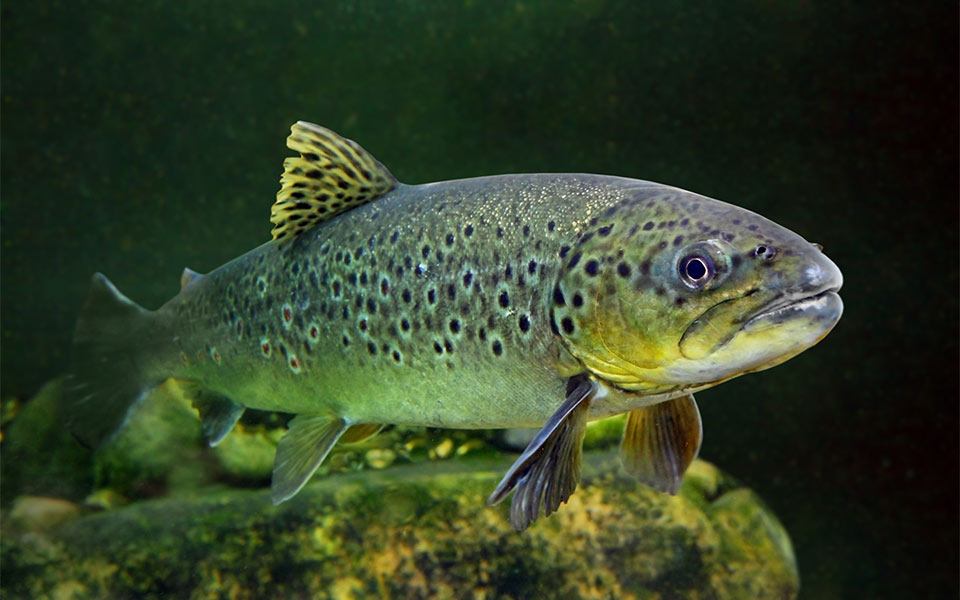
Pestrofa
Greek Name: Πέστροφα (PEHS – troh – fah)
Scientific Name: Salmo trutta / Onchorynchus mykiss
English Name: Trout, brown trout / rainbow trout
About This Animal: Trout are largely freshwater fish although some sub-types also spend some of their lives in the sea. Their natural habitat are bodies of freshwater that are cold, clean and oxygen rich, in which they predate on all manner of animals from zooplankton to small fish, crustaceans and insect larvae. In Greece there are two species, the brown trout which is native to the country and the rainbow trout which was imported from the Americas for aquaculture purposes on account of its faster growth. Alongside a number of the country’s rivers one finds small trout farms next to tavernas offering the fish.
How It’s Served: Pestrofa is often smoked, and served as an appetizer, or baked with potatoes and/or vegetables for a main dish. In Epirus, locals love to bake the fish and drizzle it with butter.

© Shutterstock
Pinna (Endangered – Do not consume)
Greek Name: Πίνα (PEE – nah)
Scientific Name: Pinna nobilis
English Name: Noble pen shell
About This Animal: Α large clam that can reach up to a meter in length and which is endemic to the Mediterranean, this shellfish has long been used as a source of food and sea silk (thread the mollusc uses to anchor itself to the seabed and which was once spun into cloth). It also has a rather charming symbiotic relationship with shrimp that live inside the clam and warn it of impending dangers by pinching it, causing it to close. This iconic animal is however threatened with extinction due to fishing, pollution, damage by trawlers and anchors and loss of the sea grass meadows in which it lives.
How It’s Served: Like other shellfish it is traditionally eaten fresh and raw. However it should not be consumed today, given that pinna is an endangered species that is protected by law from all forms of fishing in Greece.
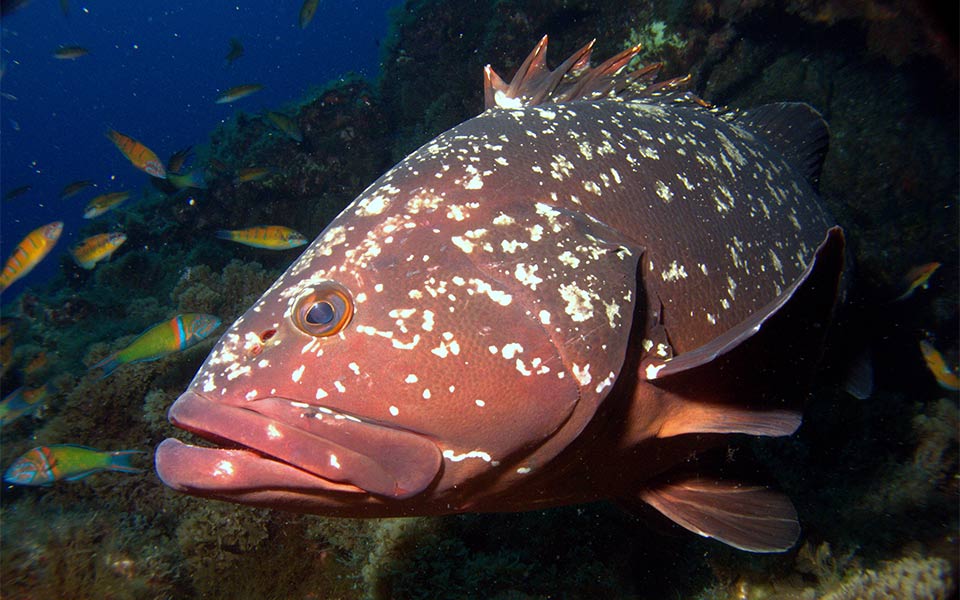
© Shutterstock
Rofos (Vulnerable)
Greek Name: Ροφός (Roh – FOHS)
Scientific Name: Epinephelus marginatus
English Name: Dusky grouper
About This Animal: A relative of the sfirida (see below), this fish loves some quality alone-time, spending its days on the rocky bottoms of subtropical waters including the Mediterranean Sea. They are territorial, each guarding its own section of a reef where they predate on molluscs, crustaceans, fish and octopi. They are hermaphroditic, beginning life as females and then becoming males as they grow older. This, however, makes them vulnerable to over-exploitation as spear-fishermen tend to target the large males, removing them from the population. As a result this fish is considered endangered and should be avoided.
How It’s Served: This fish is traditionally baked with vegetables and garnished with lemon and olive oil, though some chefs have taken it upon themselves to incorporate the fish into other dishes. Food critics recommend boiling the head of rofos for fish soup, and braising the fish’s cheeks and gills to serve over pasta.
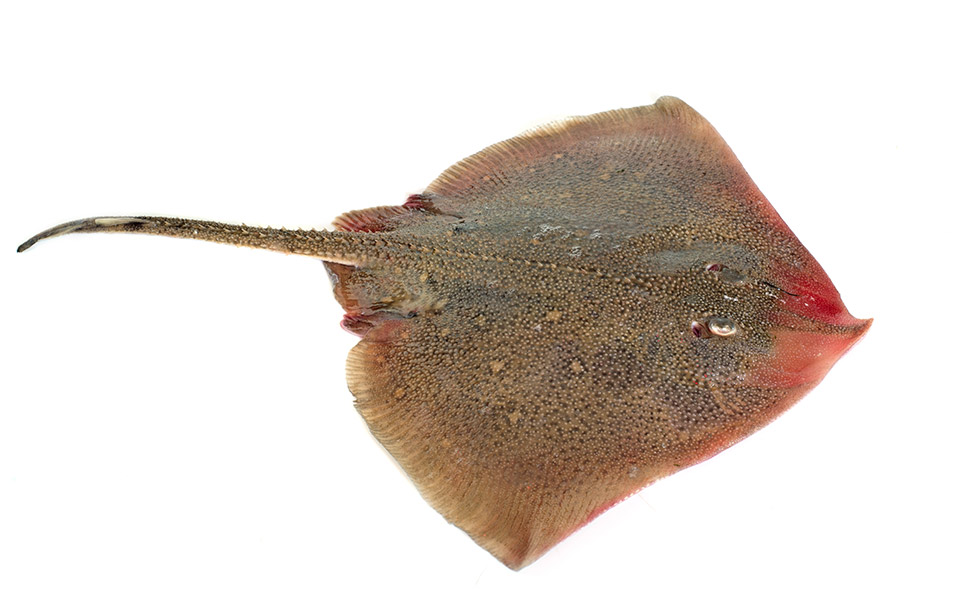
© Shutterstock
Salahi
Greek Name: Σαλάχι (Sah – LAH – hi)
Scientific Name: Batoidea (superorder)
English Name: Ray, skate
About This Animal: Salahi refers to a broad family of skates and rays (a type of batwinged cartilaginous fish related to sharks). They are a relatively inexpensive delicacy (around 5 euros per kilo). You will find salahi pre-sliced at local fish markets.
How It’s Served: Salahi is generally served fried, though it can be stewed in a red sauce or tossed in a leafy green salad.
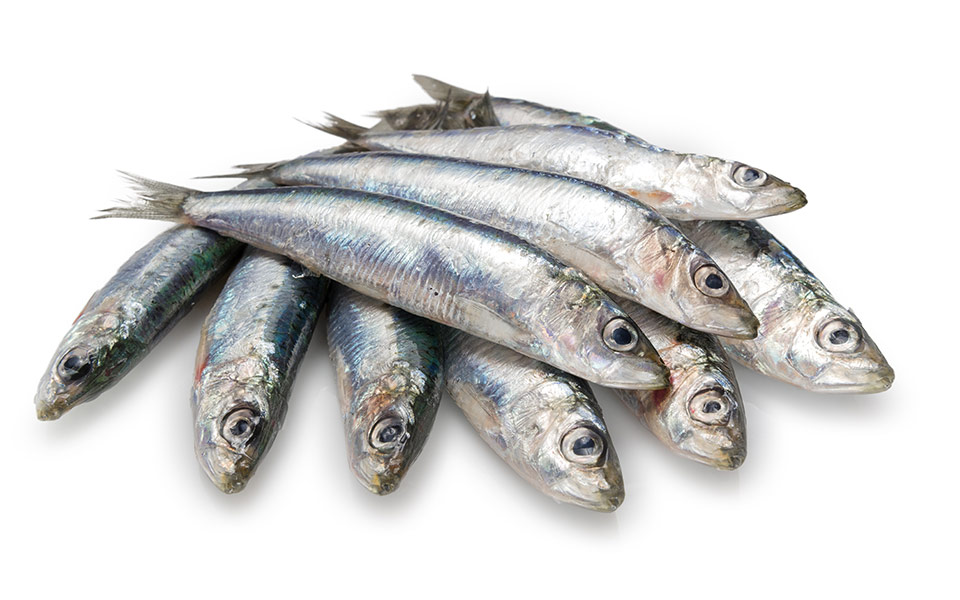
© Shutterstock
Sardela
Greek Name: Σαρδέλα (Sahr – THEH – lah)
Scientific Name: Sardina pilchardus, Sprattus sprattus (among others)
English Name: Sardines, pilchards, sprats
About This Animal: Known as ‘the poor man’s fish’ for its affordability in comparison to other available fish and seafood, sardeles are one of the most common appetizers offered at Greek tavernas. Like the English term “sardine”, sardela actually refers to a number of small, silvery fish including young pilchards and sprats. Visitors to the island of Lesvos may also encounter the papalina – a local, seasonal type of sardine famed for its superior taste.
How It’s Served: Like anchovies, sardines are prepared in a multitude of ways in Greece. Whether they are fried, grilled or baked in the oven with tomato, this fish is best paired with a glass of ouzo by the sea. The papalina of Mytilene are often also served pasto – raw and cured with salt. You can either eat just the flesh by removing the spine, or, if they are small enough, simply eat them whole.
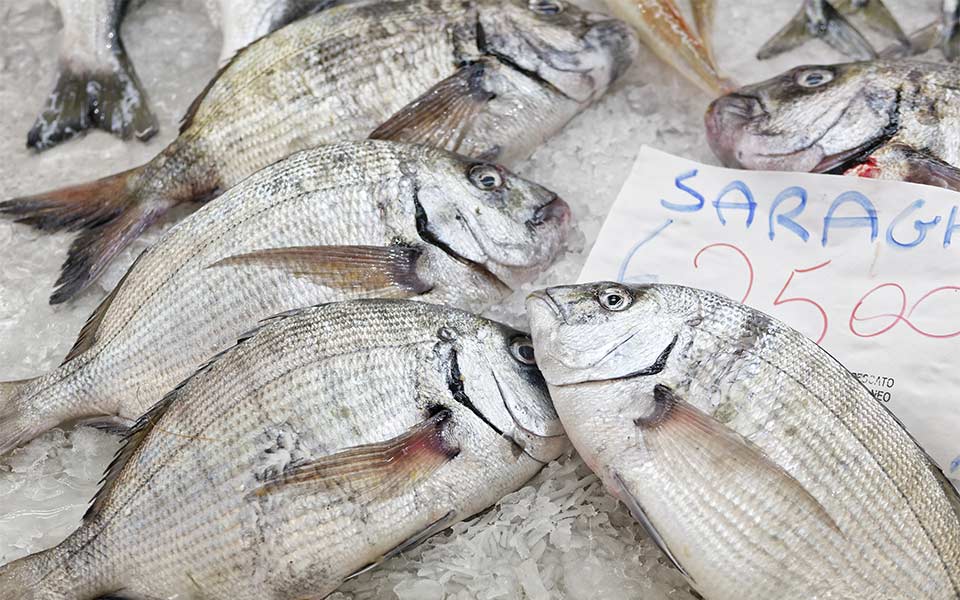
© Shutterstock
Sargos
Greek Name: Σαργός (Sahr – GOHS)
Scientific Name: Diplodus sargus
English Name: White sea bream, sargo
About This Animal: Colloquially known as ‘white sea bream,’ sargos lives and thrives in the rocky reefs of the east Atlantic Ocean, the Mediterranean Sea and Black Sea. An omnivore of sorts, the sargos feeds on crustaceans, mussels, and some seaweeds and corals, using their strong jaws to crush shells.
How It’s Served: Like many other hearty white fish, locals typically eat sargos charcoal grilled and served with lemon and oil. It can also be baked in the oven with onion, tomato, garlic and white wine.
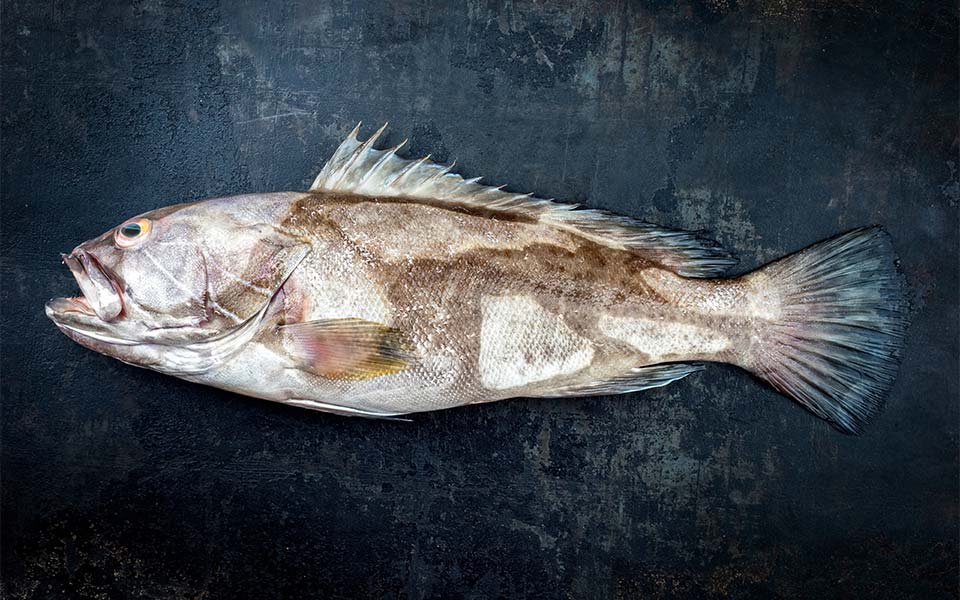
© Shutterstock
Sfirida
Greek Name: Σφυρίδα (Sfee – RI – dah)
Scientific Name: Epinephelus aeneus
English Name: White grouper
About This Animal: Hailing from Mediterranean waters and the east Atlantic Ocean, this fish is related to the rofos (dusky grouper) and shares its characteristic of changing sex once it reaches a certain weight (about nine kilograms). Sfirida is also prized among spearfishermen and one of the more expensive Greek fish. However it is not as vulnerable as the rofos and so can be consumed with a clean conscience (provided, that is, that it meets the minimum legal requirement of being above 45 cm in length).
How It’s Served: Τhis meaty fish is relatively common in Greek cuisine. Sfirida, or ‘white grouper’ should be grilled and drizzled with lemon and olive oil and paired with dry white wine. Though, you may also enjoy it boiled in a fish soup.
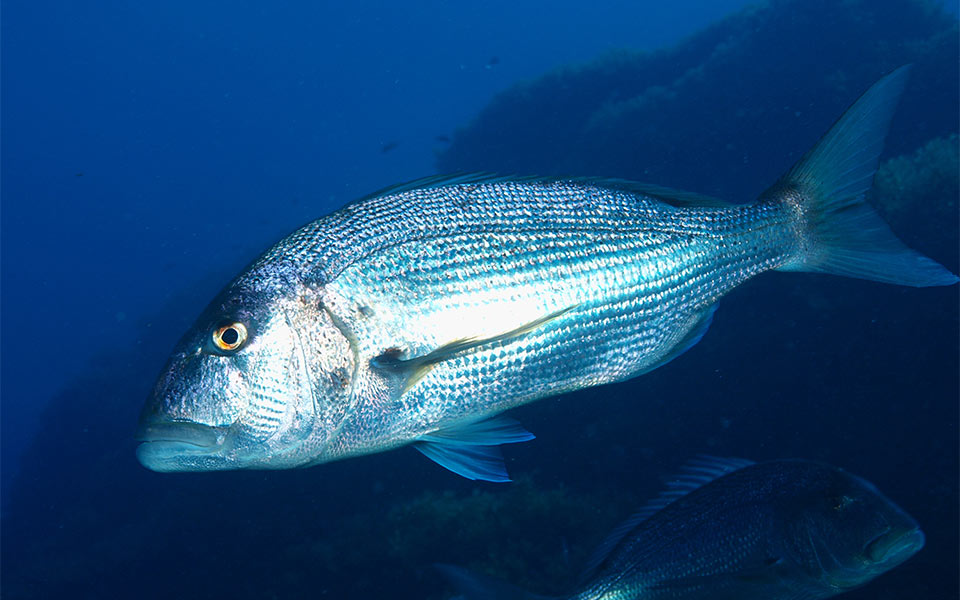
© Shutterstock
Sinagrida
Greek Name: Συναγρίδα (See – nah – GREE – dah)
Scientific Name: Dentex dentex
English Name: Common dentex
About This Animal: Sinagrida, or the ‘Queen of the Sea’ as some Greek fisherman call it, lives along the rocky seashores of the Mediterranean, where it feeds on other fish. Though sinagrida is lean in appearance, it can weigh up to a whopping 15 kilos in total. Given its high price point, this fish is something of a specialty in Greek cuisine.
How It’s Served: Sinagrida is most often charcoal grilled or roasted in the oven with vegetables and served whole with, of course, oil and lemon.
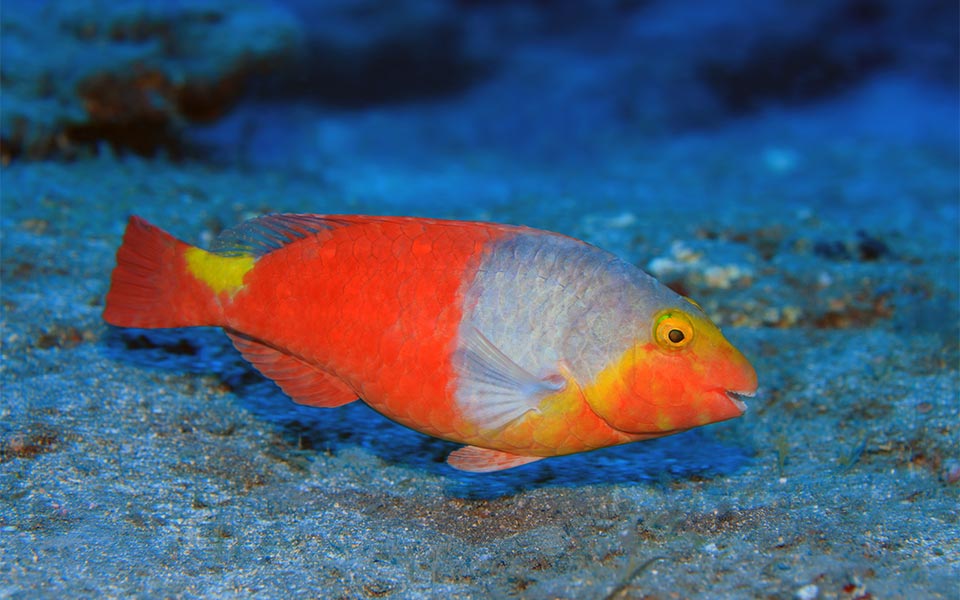
© Shutterstock
Skaros
Greek Name: Σκάρος (SKAH – rohs)
Scientific Name: Sparisoma cretense
English Name: Parrotfish, Mediterranean parrotfish
About This Animal: Inhabiting shallow waters of the Atlantic Ocean and south Mediterranean Sea, this medium-size, multi-colored (red, yellow and blue) fish resembles the bird for which it’s named. It lives in rocky areas where it grazes primarily on algae, for which its ‘beak’ is adapted.
How It’s Served: Skaros is served grilled with vegetables and served whole.
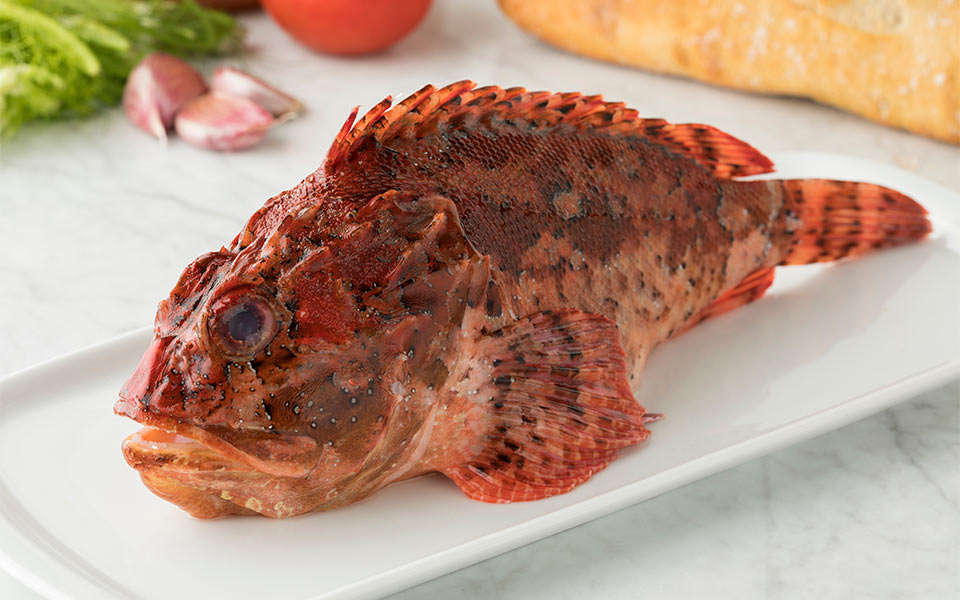
© Shutterstock
Skorpina
Greek Name: Σκορπίνα (Skohr – PEE – nah)
Scientific Name: Scorpaena scrofa
English Name: Red scorpionfish, rockfish
About This Animal: Though it’s commonly misconstrued as a poisonous fish, skorpina is, in fact, very edible and prized in Greek cuisine. That said, it is venomous with dorsal spines that can inflict very painful stings if it is not handled with care. In its natural habitat, this species of fish (sometimes called rockfish because of its tendency to live among rocks) is predatory, emerging from its burrow in the rocks to hunt at night.
How It’s Served: Gourmands say scorpina is best enjoyed slow-cooked with greens or in a fish soup, although it can also be charcoal-grilled.
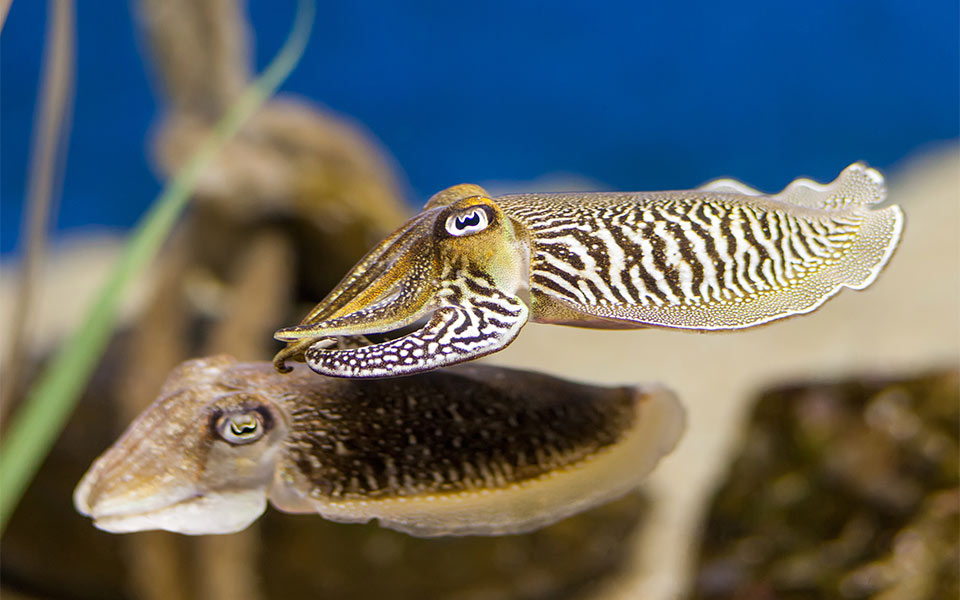
© Shutterstock
Soupia
Greek Name: Σουπιά (Soo – PYAH)
Scientific Name: Sepia officinalis
English Name: Common cuttlefish
About This Animal: A relative of octopi and squid, this animal is distinguished from them by an a thick, calcified shell that sits under its skin. Soupies have eight arms as well as two longer tentacles that they use to catch prey. They feed on crustaceans, small fish, and sometimes each other. They are also masters of camouflage, with skin that can change its color and even texture almost instantaneously to blend into their surroundings. They also use this trait to communicate with each other.
How It’s Served: Soupies are rarely cooked on the grill. Instead they are baked, stewed with wine, or cooked with tomato, onions, garlic and herbs and served with pasta. They may also be prepared with spinach and dill and served with bread to dip in the sauce.
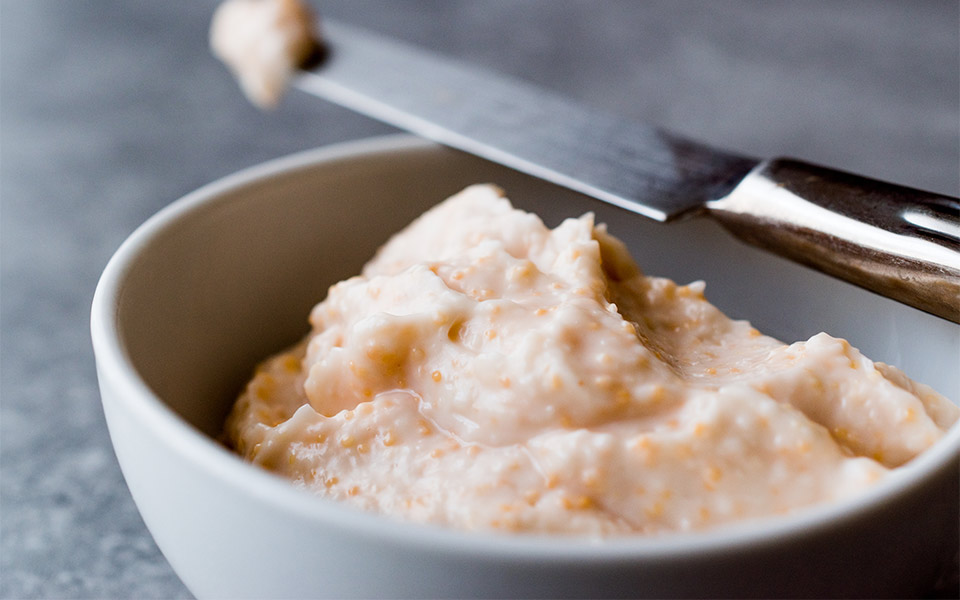
© Shutterstock
Tarama
Greek Name: Ταραμά (Ta – ra – MAH)
English Name: Fish roe
About This Product: Fishermen harvest the eggs of fish like bakaliaros or kiprinos and then treat them to create tarama, which is a white or reddish paste. (The white kinds are said to be of better quality because they are made from 100 percent eggs, whereas the red kinds contain colorings and other additives).
How It’s Served: Tarama is most commonly used to make taramosalata, a salty, creamy dip that includes olive οil, lemon juice, onion and bread.
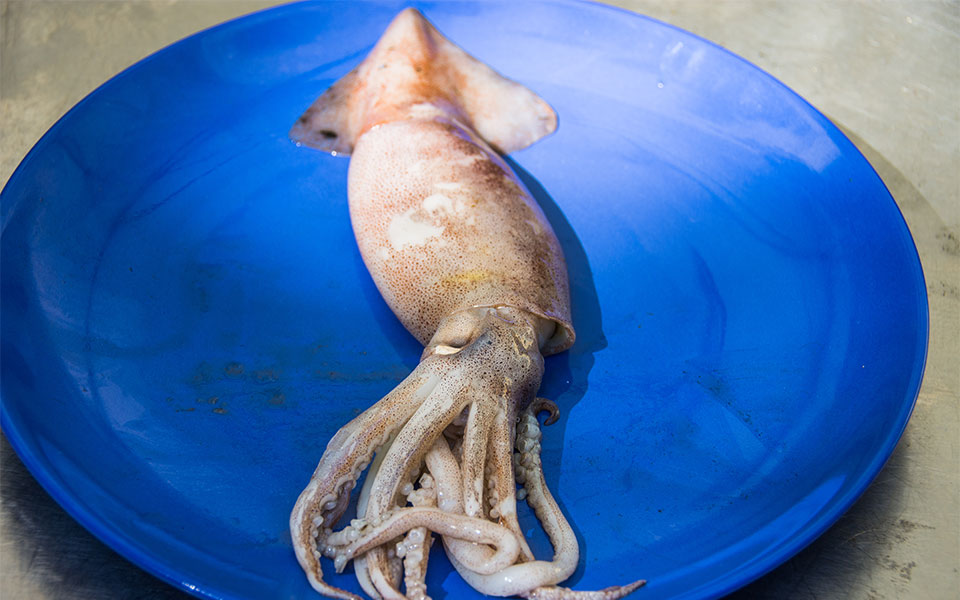
© Shutterstock
Thrapsalo
Greek Name: Σουπιά (Soo – PYAH)
Scientific Name: Todarodes sagittatus
English Name: European flying squid
About This Animal: If you’re wondering if thrapsalo, aka ‘flying squid,’ can actually fly, the answer is (said to be) yes; they can propel themselves above the waves with a jet of water and then glide to avoid predators. However the animals are much more commonly found in the sea, anywhere from the surface to depths of over 1 km. These squid are larger than kalamari and feed on fish, crustaceans and other molluscs. Their rapid reproduction means that they are not considered vulnerable to overfishing at this time.
How It’s Served: Thrapsalo is best eaten charcoal-grilled and drizzled in oil and lemon.
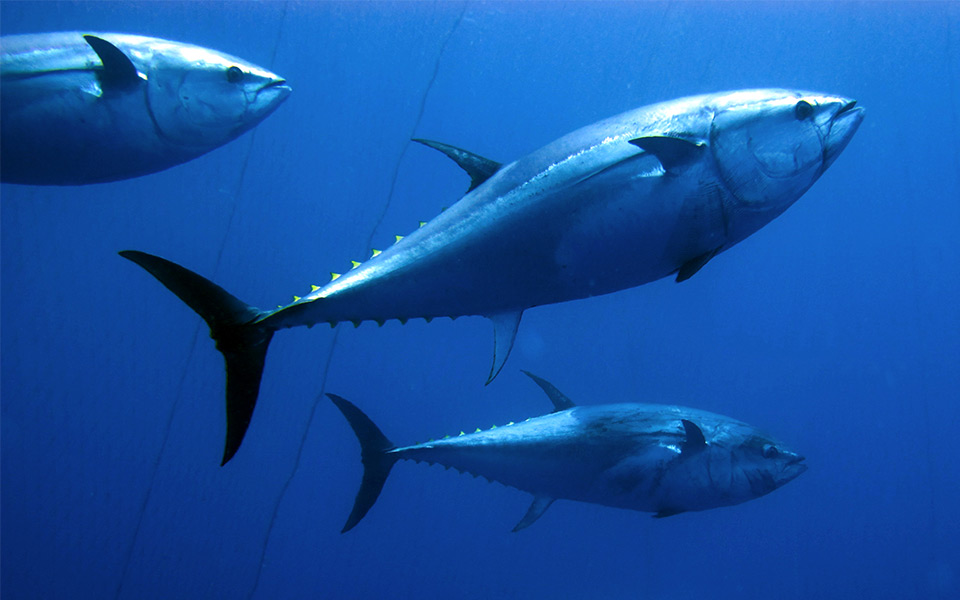
© Shutterstock
Tonos
Greek Name: Τόνος (TOH – nohs)
Scientific Name: Thunnus thynnus, Thunnus albacares, Thunnus alalunga
English Name: Bluefin tuna, yellowfin tuna, albacore tuna
About This Fish: The mighty tuna has been a prized fish in Greece since antiquity; an engraved price-list discovered from the 3rd century BC lists it as being 3 times more expensive than the cheapest fish. These large, powerful, predatory fish live in deep, open waters and are an important food source for other mammals such as dolphins. In reality the word “tonos” refers to several species. The most highly-prized is the Atlantic bluefin tuna – known as erythros (meaning red) tonos in Greece – much of which is exported to Japan where it is consumed as sashimi. However overfishing combined with the practice of capturing juveniles before they can reproduce and raising them in fish-farms has led to the species’ numbers to fall to dangerously low levels. As such experts recommend avoiding eating bluefin tuna. More common are the yellowfin tuna (kitrinopteros tonos) and albacore tuna (lefkos tonos). The island most associated with tuna fishing is Alonissos, which produces Tonos Alonissou: mainly albacore and yellowfin tuna which is preserved in glass jars in oil or water.
How It’s Served: In most fish tavernas, you are more likely to encounter tuna in its preserved form such as smoked tuna from Alonissos as a meze. At more high-end establishments however you may find dishes such as grilled fresh tuna steaks or tuna ceviche.
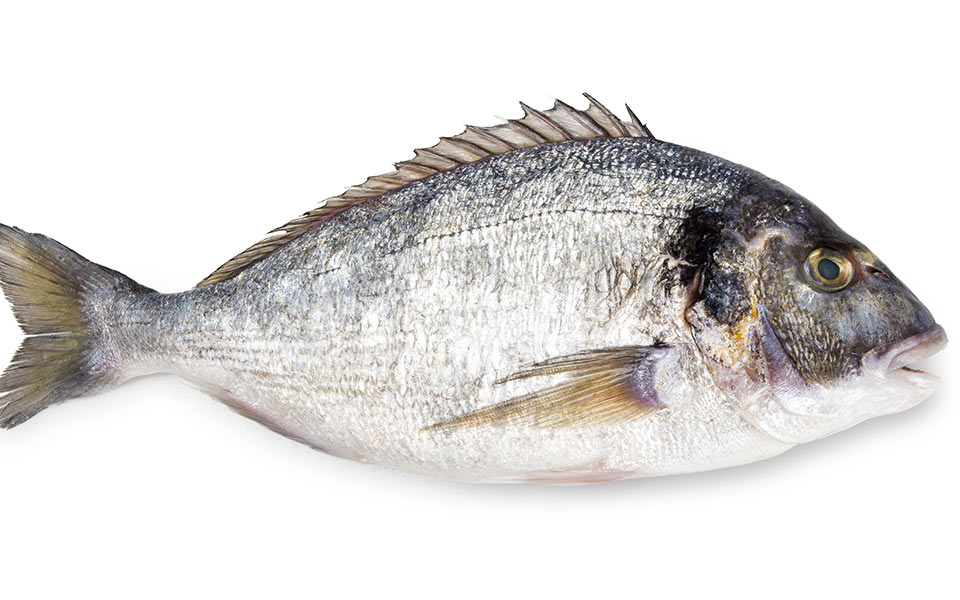
© Shutterstock
Tsipoura
Greek Name: Τσιπούρα (Tsee – POO – rah)
Scientific Name: Sparus aurata
English Name: Gilthead sea bream
About This Fish: Perhaps the most popular fish in Greece – often the default choice for a fish dinner to celebrate a special occasion – this tasty white fish is both caught wild and extensively cultivated in numerous fish-farms around the country including in the Amvrakikos Gulf and the Ionian Sea. As such, the fish is also exported. It is mainly carnivorous and can withstand large fluctuations in salinity, and so can often be found in river estuaries.
How It’s Served: Tsipoura is usually charcoal-grilled and served drizzled with oil and lemon. Alternatively it can be baked in the oven.
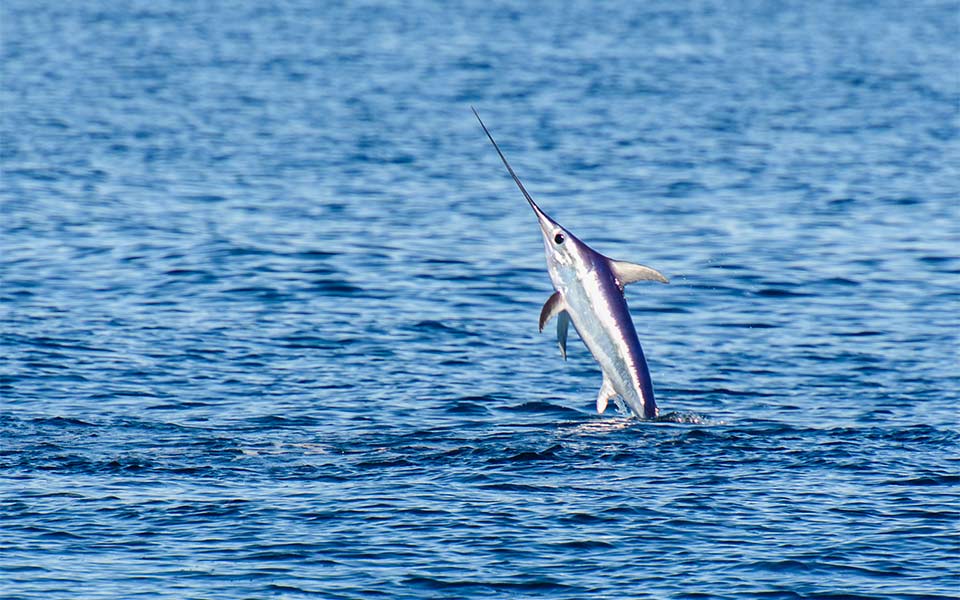
© Shutterstock
Xifias
Greek Name: Ξιφίας (Ksee – FEE – ahs)
Scientific Name: Xiphias gladius
English Name: Swordfish
About This Fish: A large fish with a bill that slays, swordfish are native to temperate waters around the globe. They are among the fastest fish in the world, and use their long bills to stun or maim prey making it easier to catch. It’s a prized food and game fish, which has led to its overfishing. In North America this led to public information campaigns which successfully reduced demand for the fish, allowing stocks to rebound. In the Mediterranean however it is still considered overfished and environmental groups recommend avoiding it.
How It’s Served: Xifias is usually cut into steaks and either grilled or baked in the oven. It is also sometimes cut into cubes and skewered together with peppers and tomatoes make a large kebab (souvlaki).

